Play is serious business for kids, and a creative playroom helps them get to work. Spark your imagination when you immerse yourself into these 44 whimsical playroom ideas.
Children are masters of amusement and deserve a playroom that can launch—and contain—their energies. Whether you have a dedicated playroom or simply DIY part of another room into a play space, a kids’ playroom is a must in every home with young children.
Today’s playroom ideas go well beyond simple toy storage. A climbing wall, art center, and integrated hiding spaces are common in modern playroom design. Each element in the play space serves a purpose, and that purpose is fun! Check out our 44 best playroom design ideas and get inspired to create your family’s own playful paradise.
1. Ball Pit Playroom Ideas
If you remember the thrill of diving into a pit of colorful balls, you probably want to replicate this in your own child’s playroom. Playing in a ball pit is a great way to burn off excess energy on rainy or cold days. Adding a slide provides a fun way to enter the pit. If space is a concern, choose a ball pit that can be put up and taken down as needed.
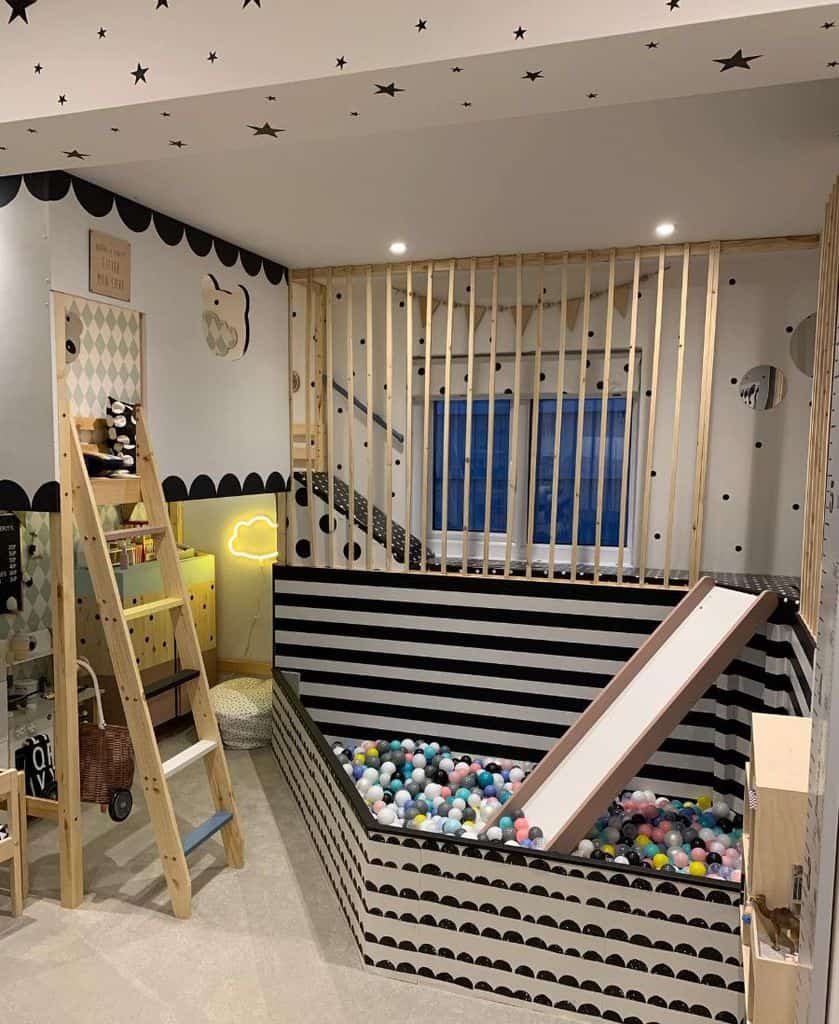
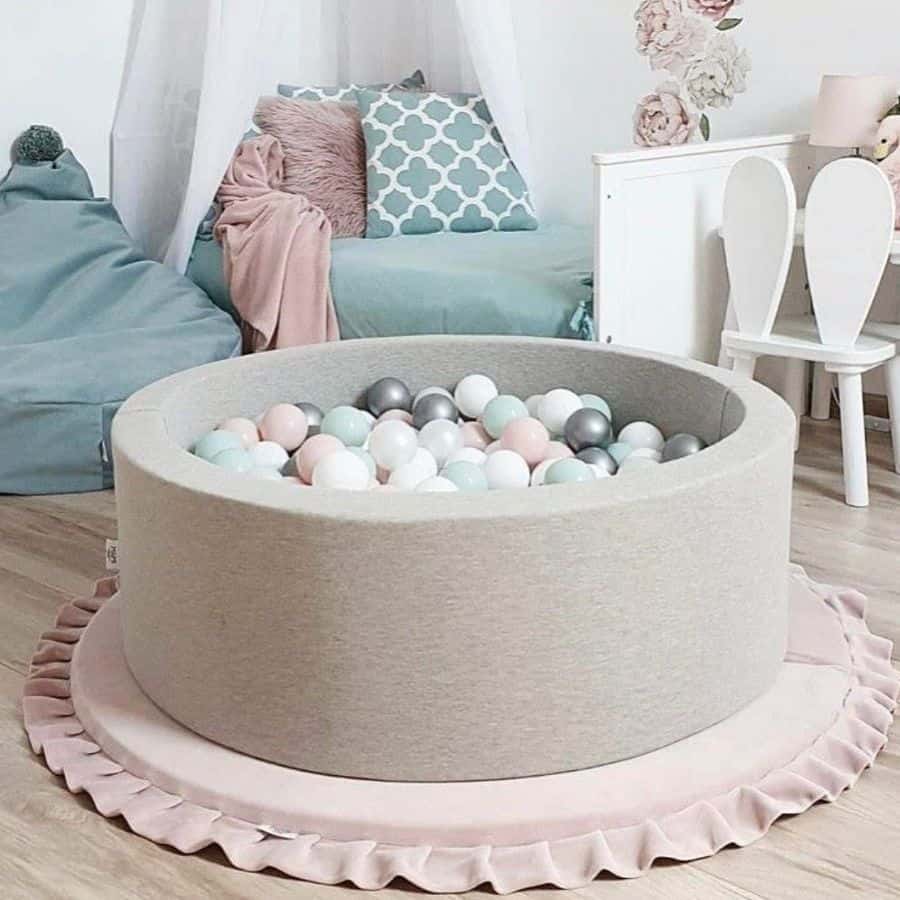
Even though ball pits have fallen out of popularity in public spaces, there’s no reason to miss this fun feature at home. Many stores sell simple ball pit kits in a variety of bright or pastel colors. It’s also relatively easy to find ball pit plans online and DIY. Here is one example that includes a simple staircase:
2. Bedroom Playroom Ideas
If you don’t have a spare room to turn into a playroom, you can turn a corner of your kid’s room into a play zone. Doing so usually involves making the most of a small space. Incorporate playroom organization into whatever shelves, drawers, or closets that already exist in the bedroom.

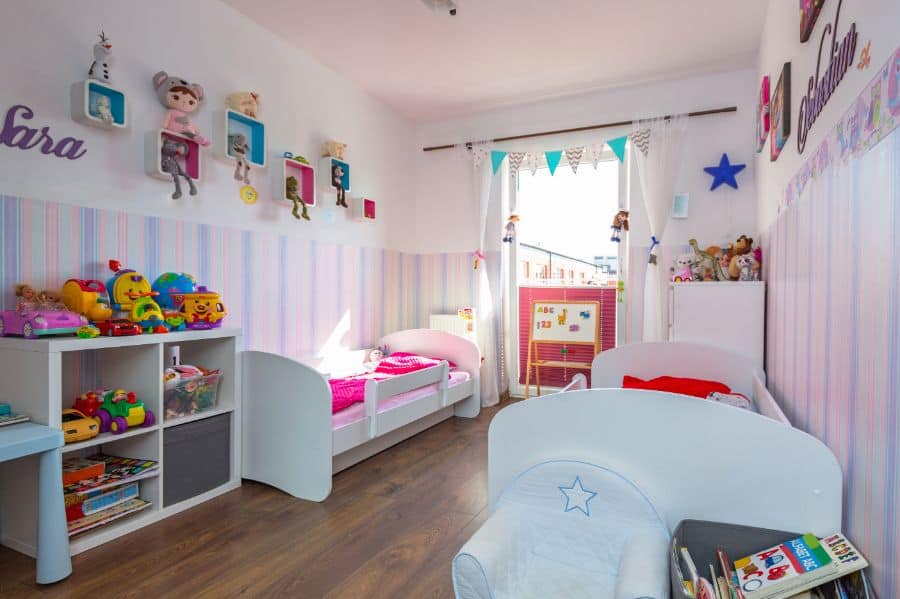
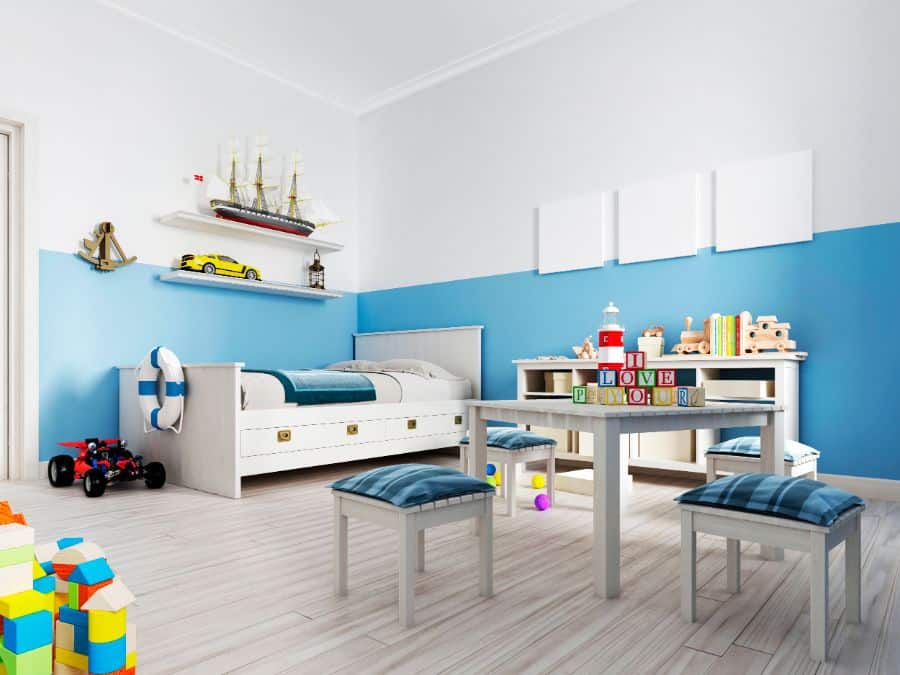
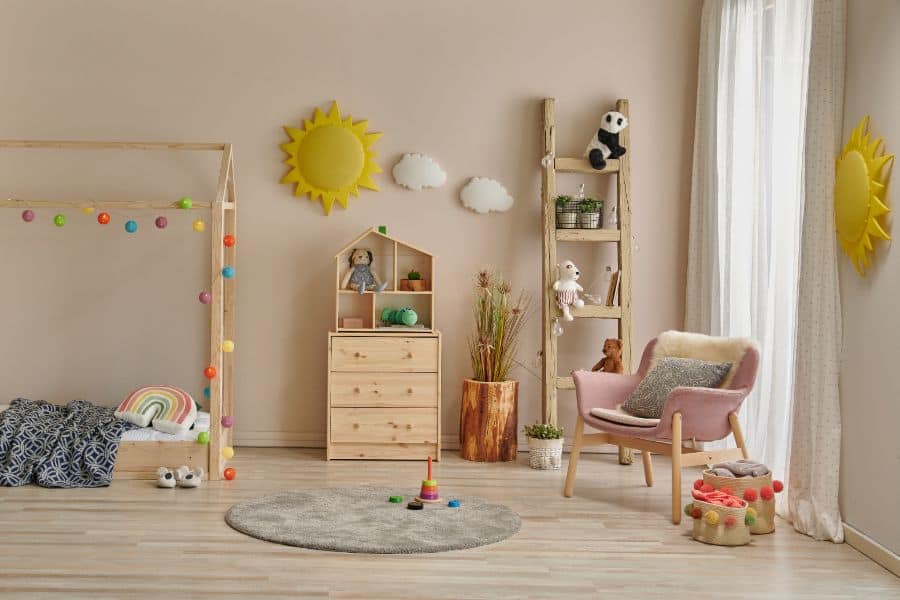
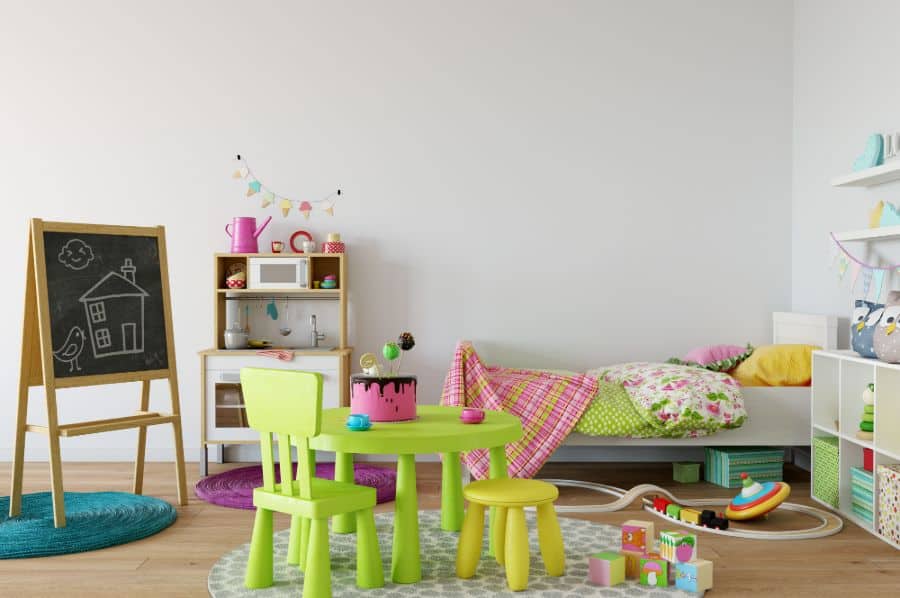

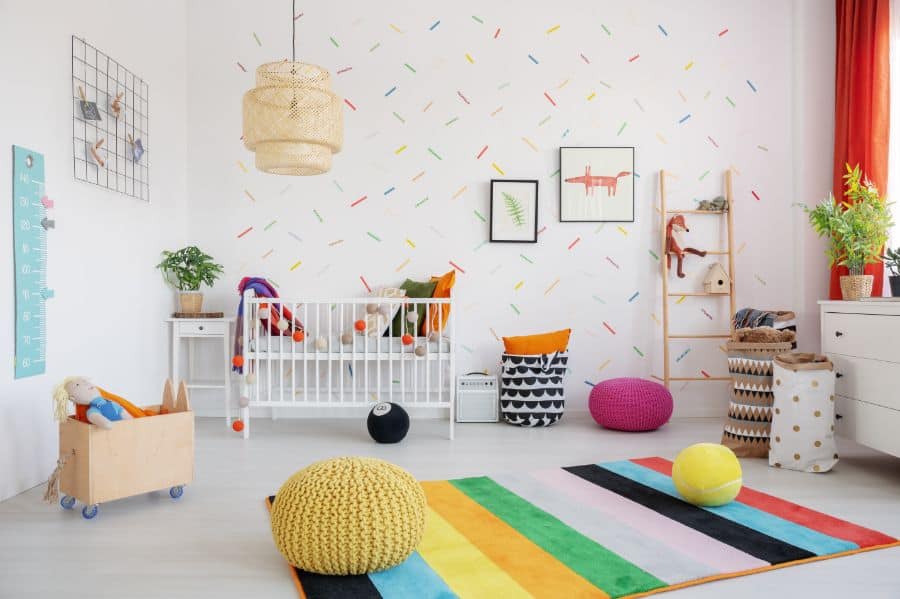
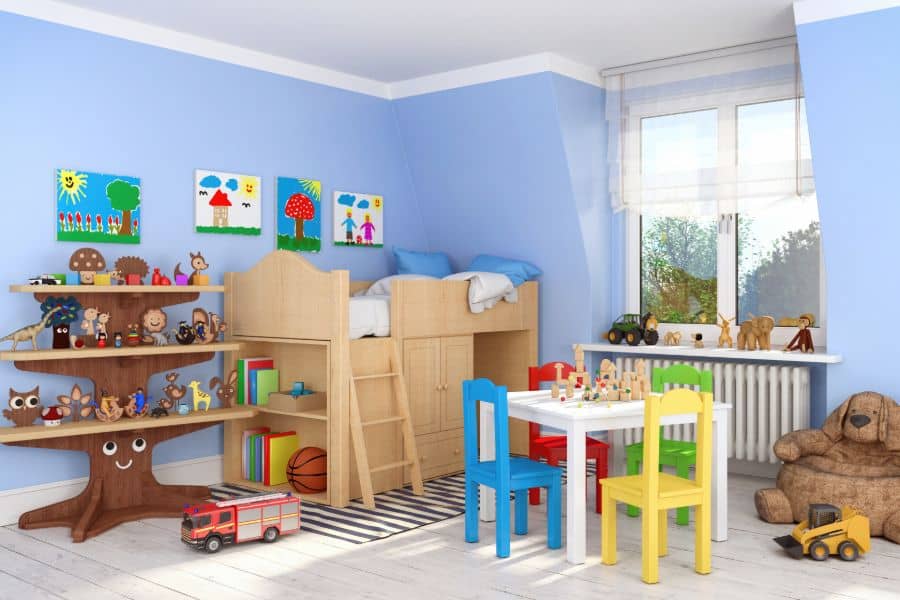
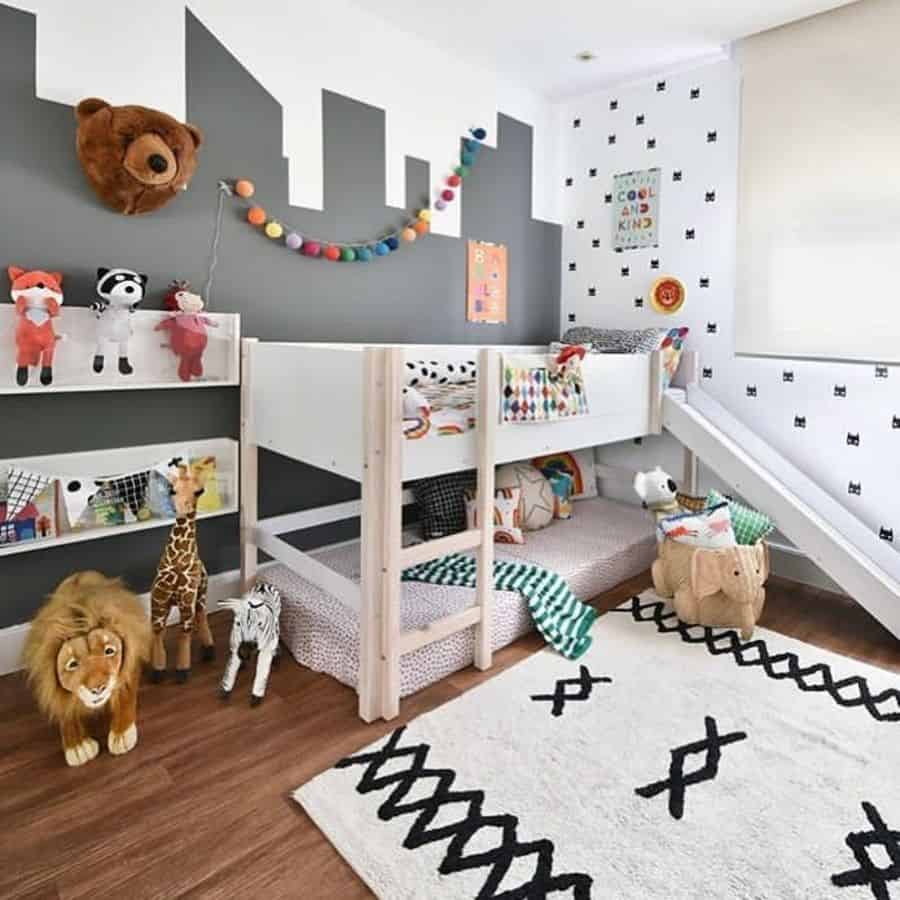
Most kids’ playroom ideas merge well into a child’s bedroom. Choose décor colors that coordinate with the child’s bedding and furniture. You can designate the playroom from the sleeping zone with a colorful rug or accent wall. A chalkboard wall is a fun way to designate the play end of the room from the sleeping side.
When space is at a minimum, look up for toy organization. Hang a stuffed animal hammock across a corner, or store toys on wall shelves or cubes. Make use of any storage room underneath the bed. This is the perfect place for shallow bins, filled with small blocks, fashion doll accessories, and other toys.
3. Montessori Playroom Ideas
A Montessori-inspired playroom is simple, clean, and dedicated to learning. Italian physician Dr. Maria Montessori developed an education method that encourages self-motivated growth at every age of development. The Montessori method emphasizes the importance of child-centered playroom design.
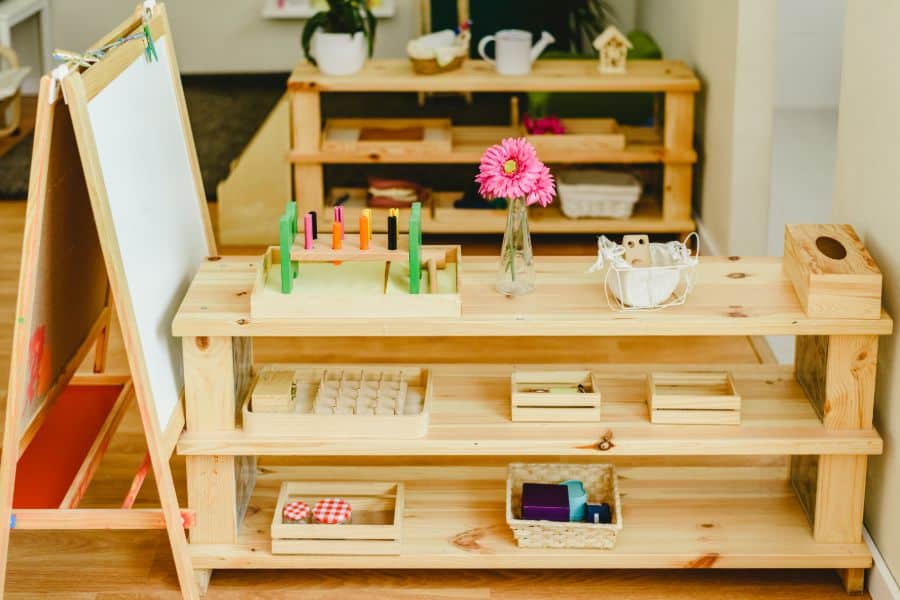
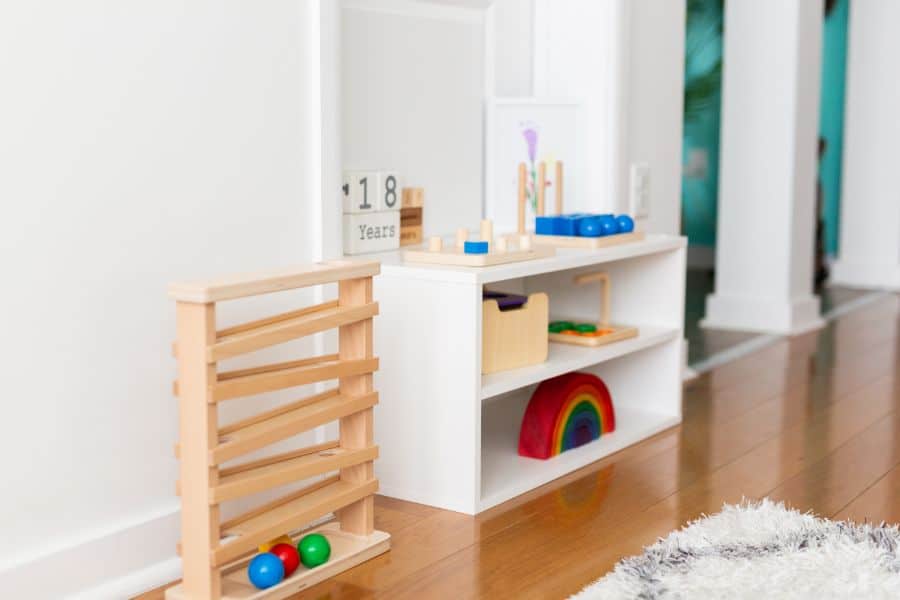
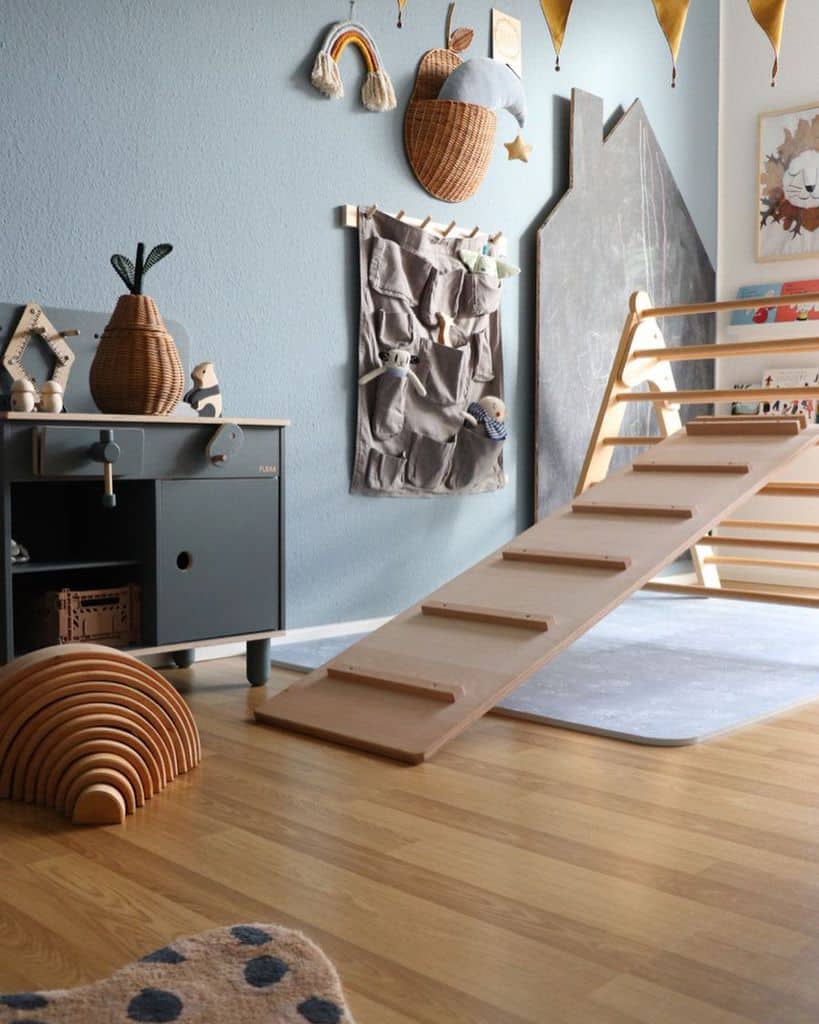

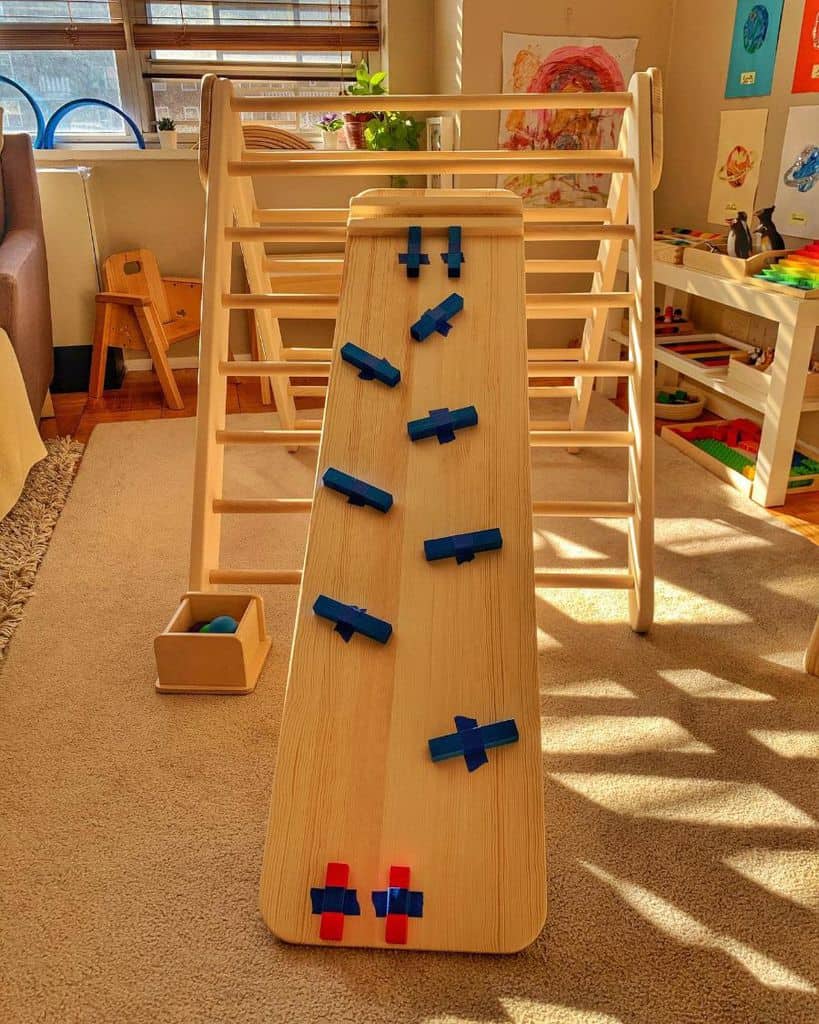
While Montessori playroom design is flexible, it should include the following elements:
- A limited number of activities and toys
- A selection of toys that engage rather than entertain the child
- A set place for each toy or activity
- Some open space for free playEvery toy and activity should be at the child’s level
If space isn’t limited, your Montessori playroom design should include separate zones for developing large motor skills vs. fine motor skills. A large rug is practically a necessity, and it’s fun to add a climbing wall, slide, or climbing structure. A well-stocked reading nook continues the Montessori theme of learning at play.
4. Playhouse / Playtent Playroom Ideas
A tent, teepee, or pop-up playhouse provides hours of fun for busy children. When tucked into the corner of the playroom, such a structure provides a welcome getaway when your son or daughter needs some time alone. Put your tent or playhouse next to a reading nook to encourage your child to hide away with their favorite stories.
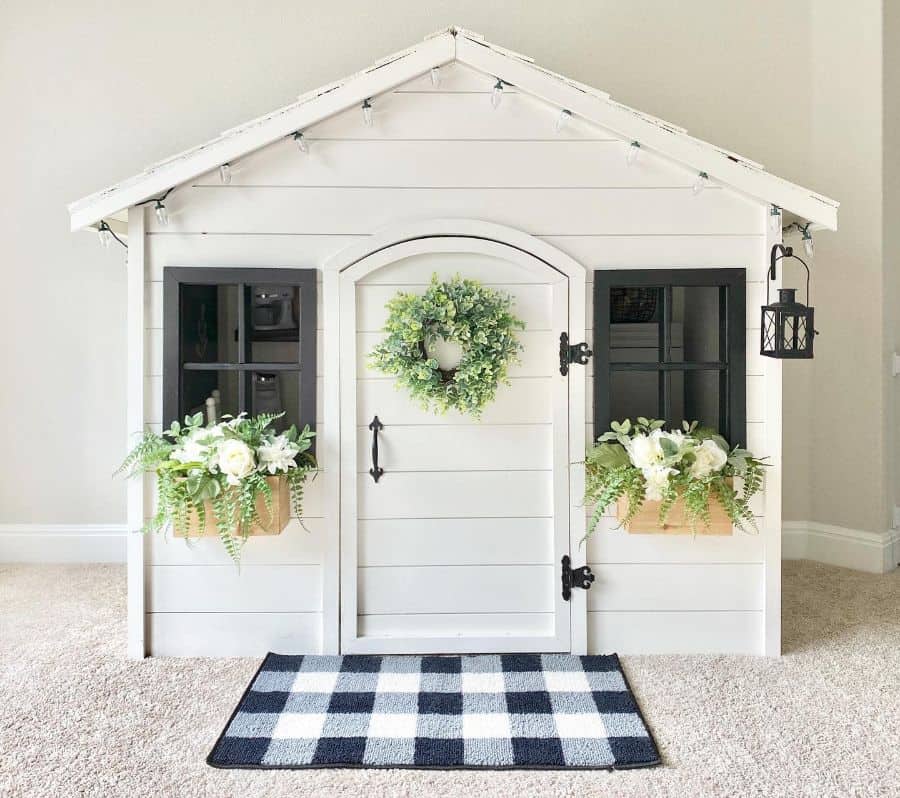
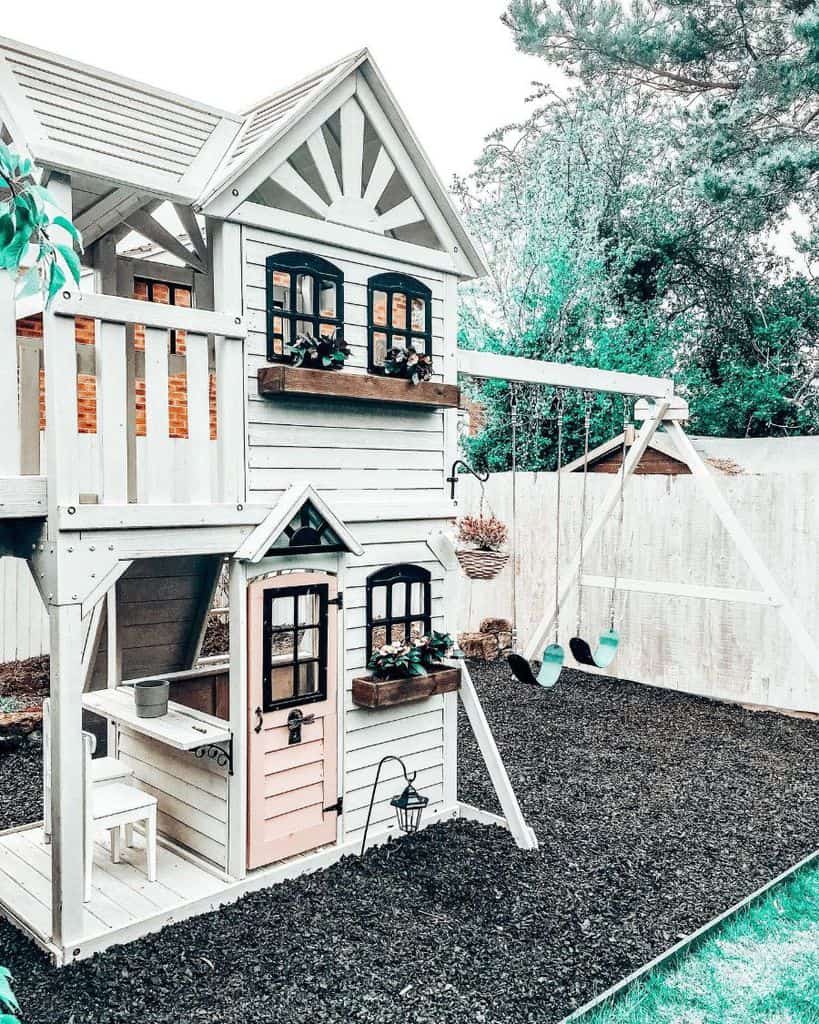

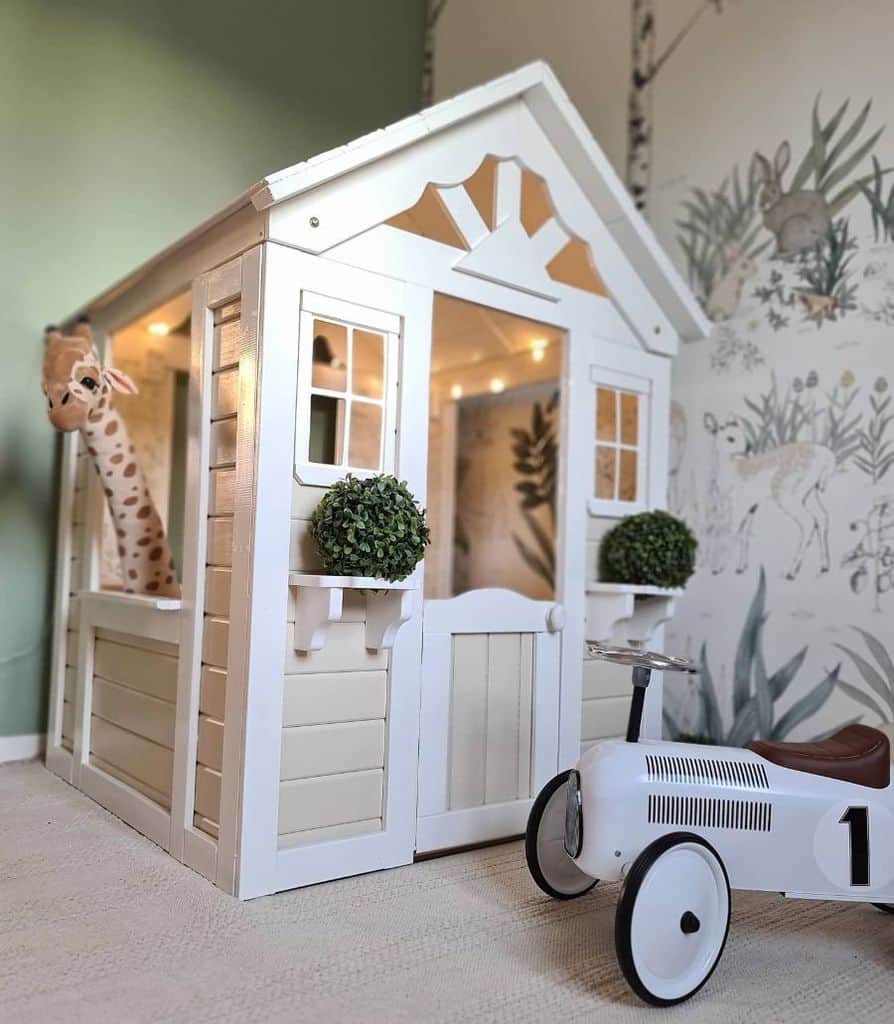
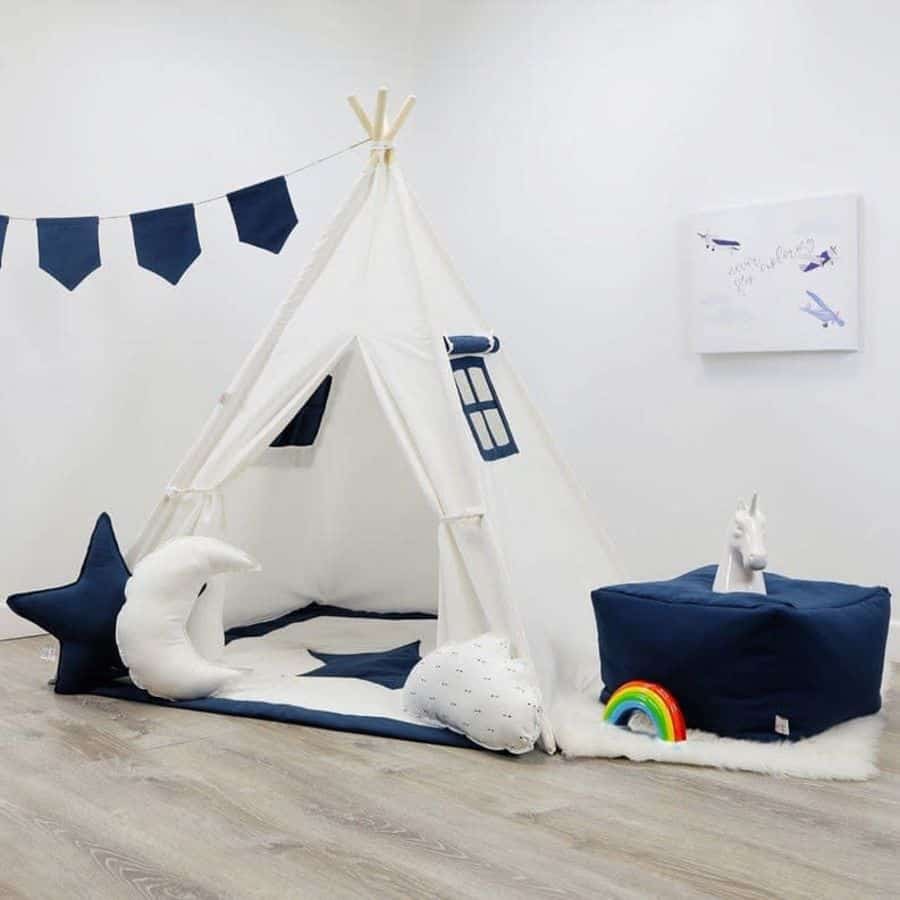
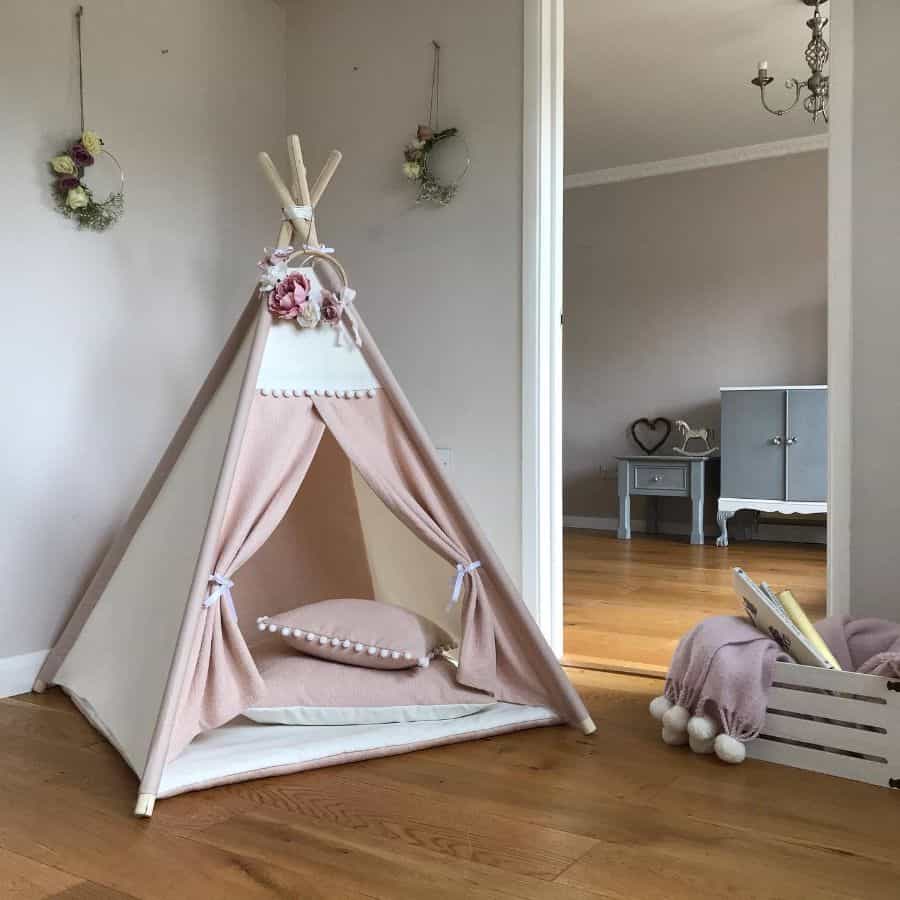
If your playroom is large enough, you can build a wooden playhouse indoors. Include a little kitchen and seating area and decorate it to coordinate with your home. A play tent or playhouse can also house stuffed animals or dolls. Children enjoy making a home for their favorite huggable toys.
5. Playmat / Playpen Playroom Ideas
If your kids’ ages are across the spectrum, your playroom design should include a way to keep the littlest ones safe. A traditional playpen is a folding bed that is easy to pop up and move from room to room. A playpen or porta-crib can be a good solution for a very young infant. However, once your baby can crawl, he or she is unlikely to be happy inside a small playpen for long.
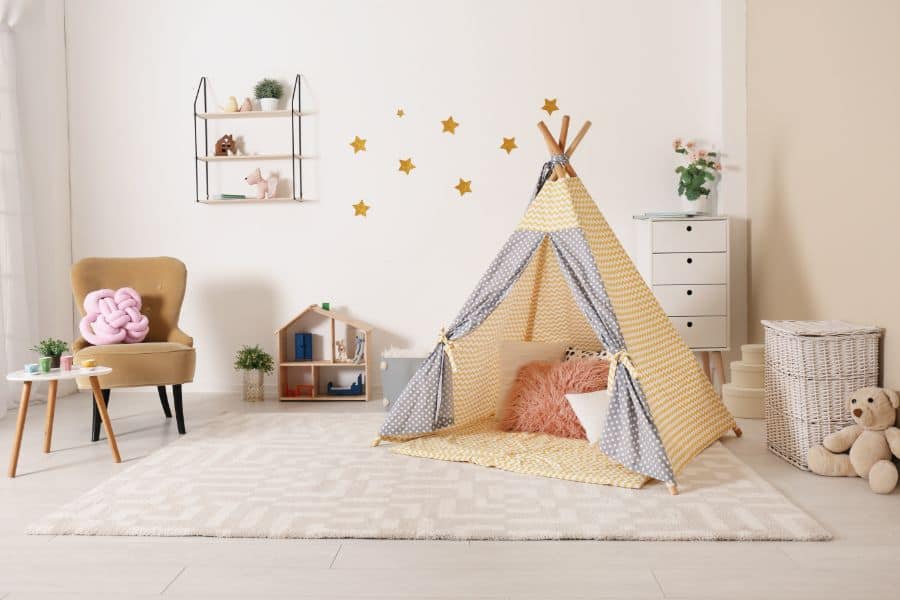
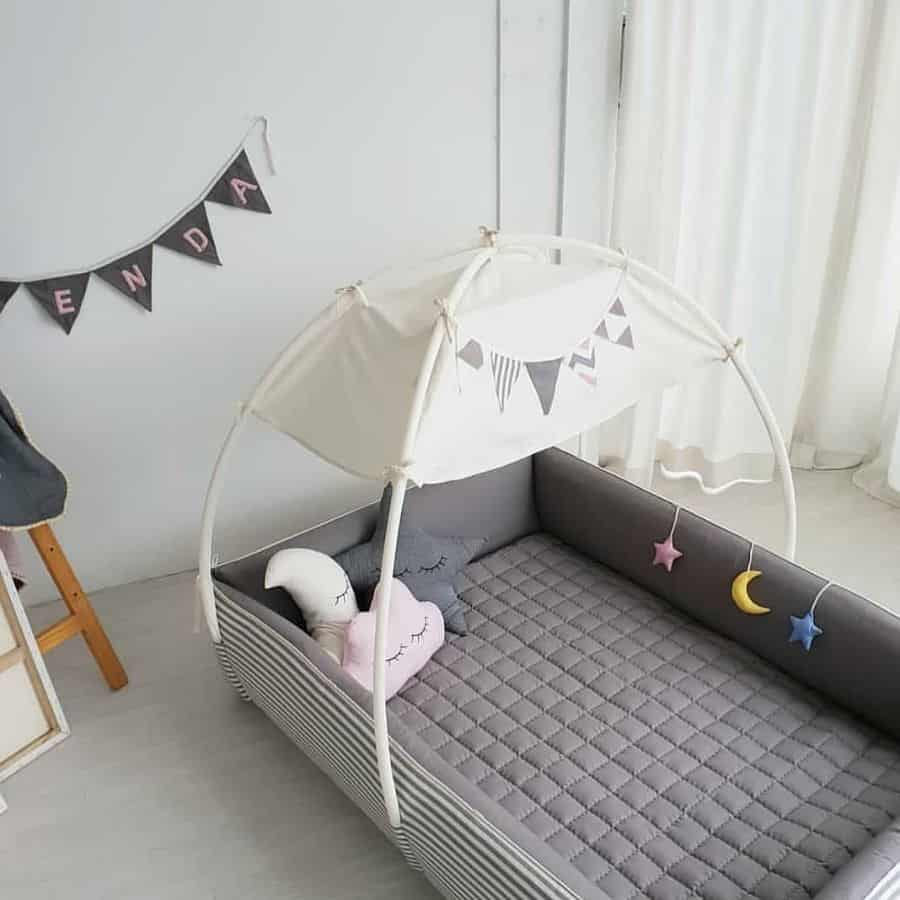
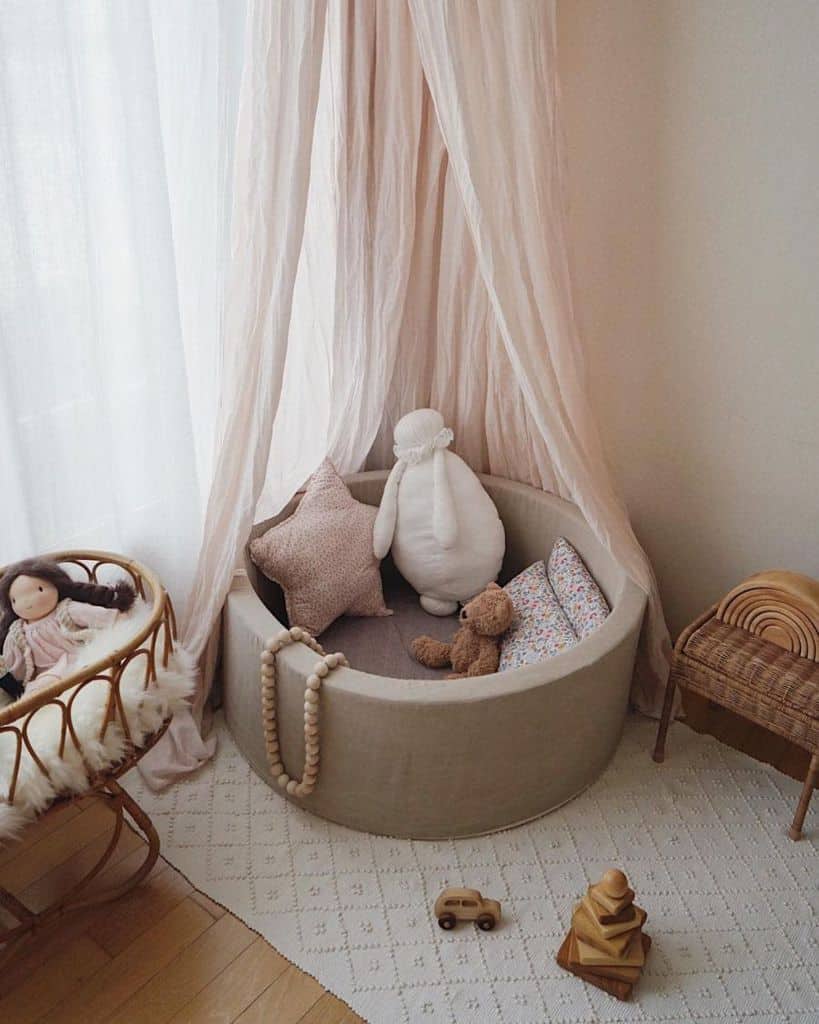
Several companies sell gate-like products that allow you to fence off a cute playroom area for your littlest children. These expansive play zones can contain toddler toys, soft foam furniture, and even a tiny table and chair. Lay interlocking foam playmats on the floor to soften a hard surface or protect the carpet from spit up or spills.
6. Creative Playroom Ideas
You can make a creative, cute play space in just about any room. Pop a teepee into a corner of your living room and include a small cube storage unit for toys. If you have a coffee table, stow toy storage baskets beneath it. Organize your child’s books on the lowest shelf of a living room bookshelf.
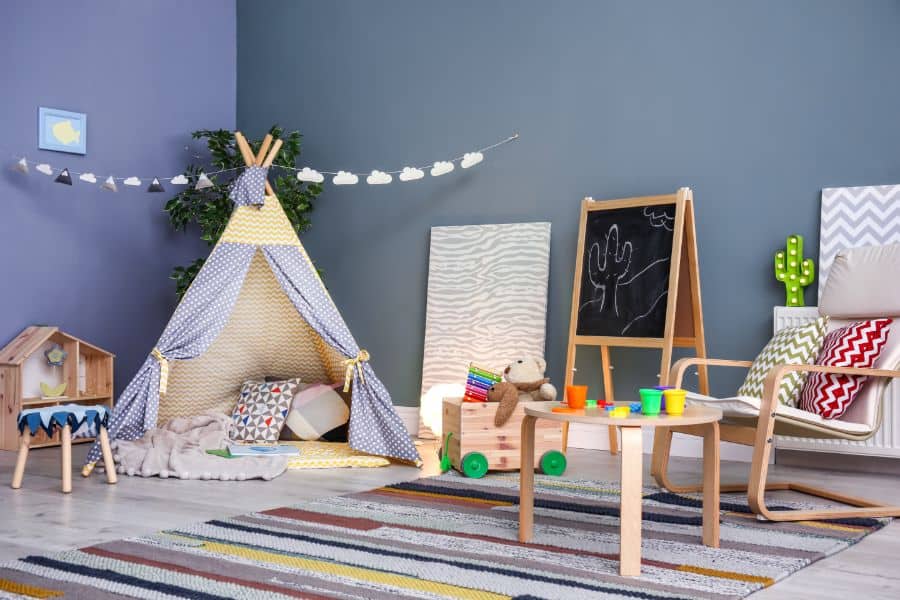
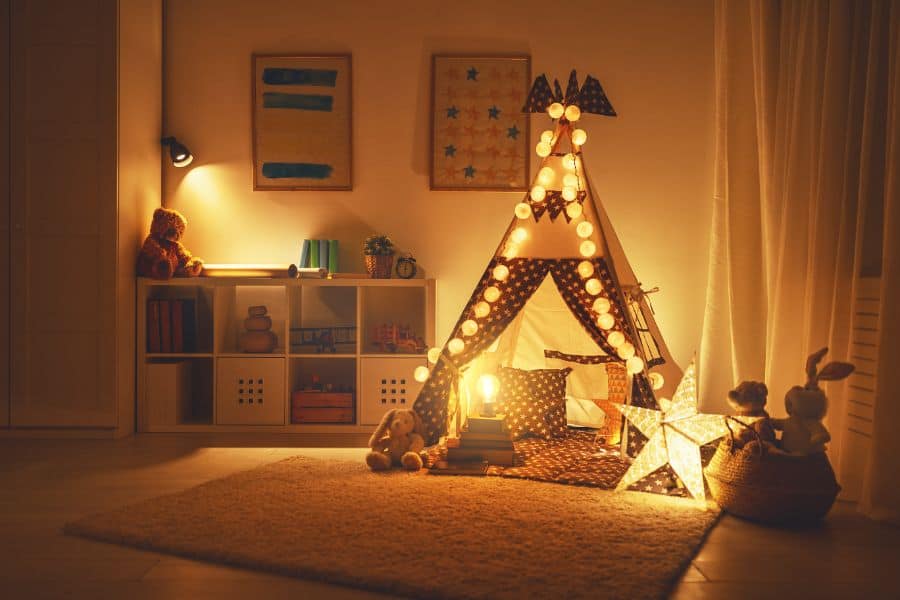
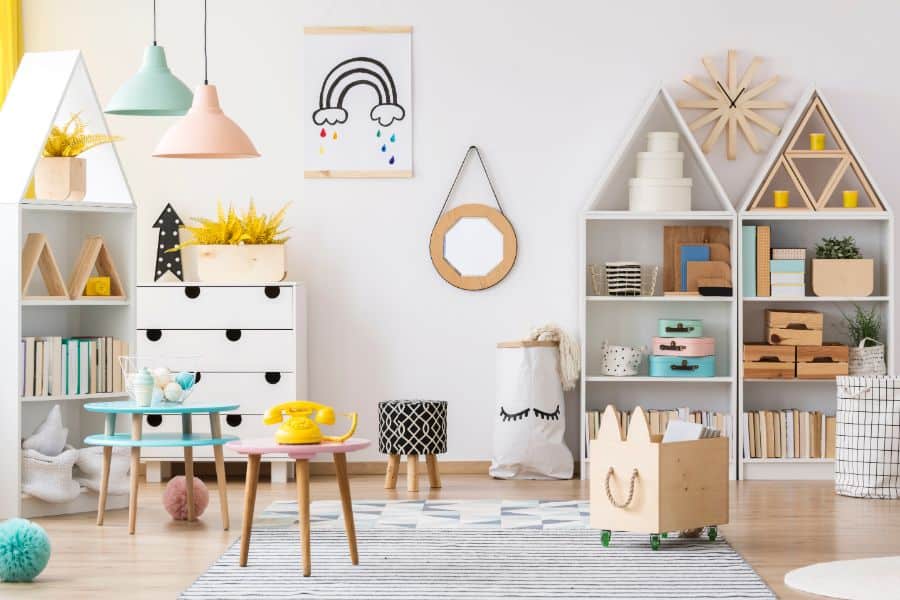

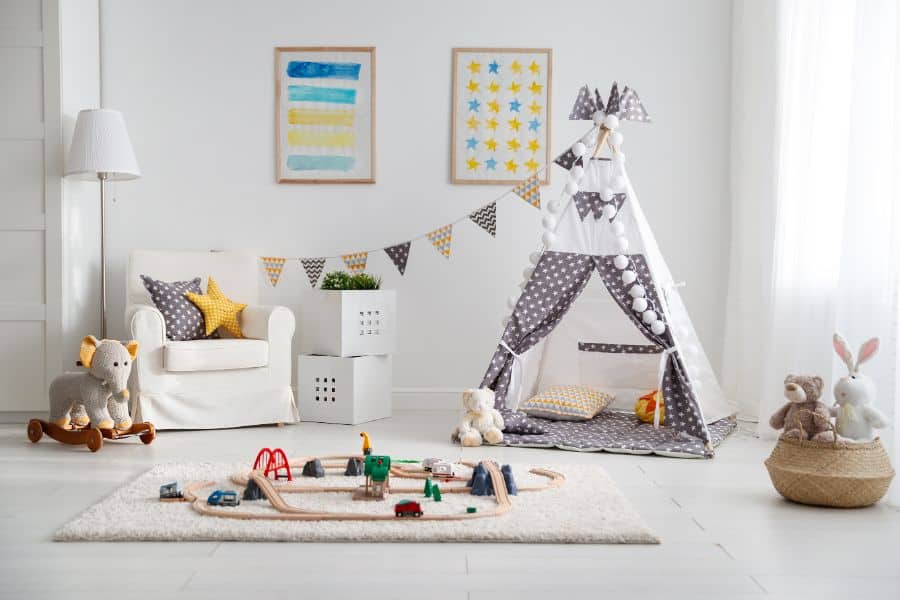

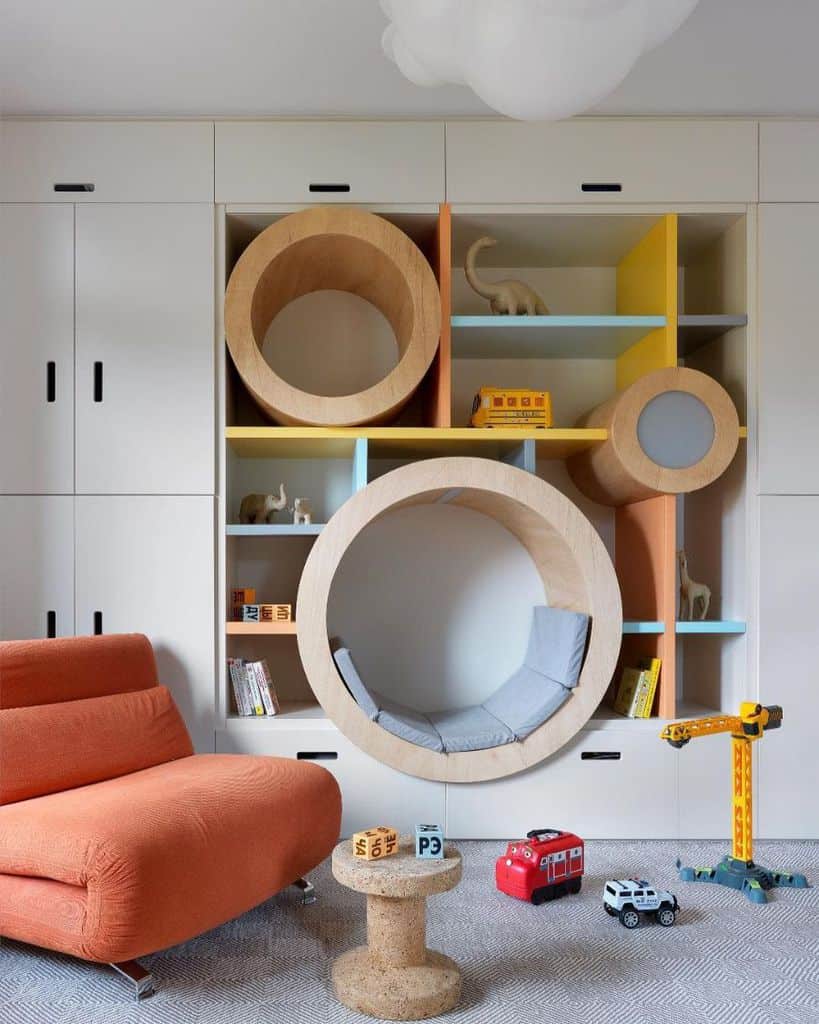
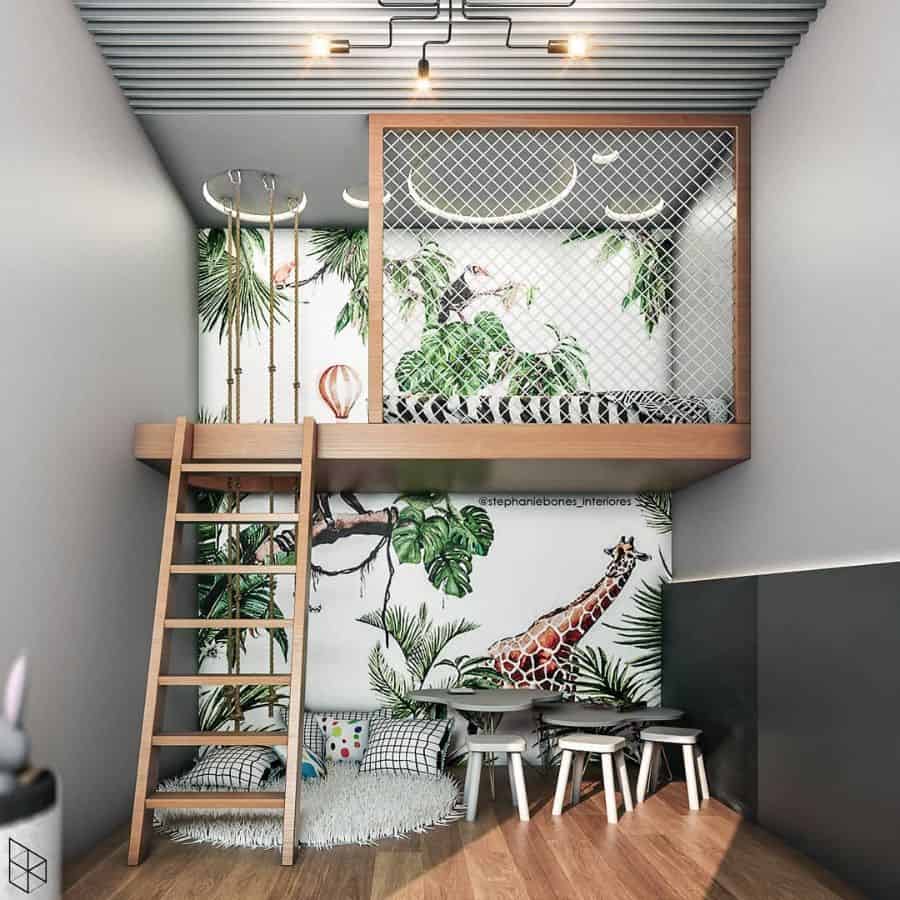
If you have a designated playroom, your kids’ playroom ideas can be almost unlimited. You can build fun cubbies and kid-friendly crawlspaces, and add a rock climbing wall to one end of the room. Look for a door-mounted swing kit that includes a climbing ladder, hand rings, and a trapeze.
7. Reading Nook Reading Corner
Children who are exposed to books early and often gain an advantage over kids who aren’t read to as frequently. Having a reading nook in the playroom helps foster a lifelong love of the written word. Make it a cozy space with seating that allows you to sit comfortably and read to your children. Also, have beanbags or other child-sized furniture that encourages them to look at books alone.

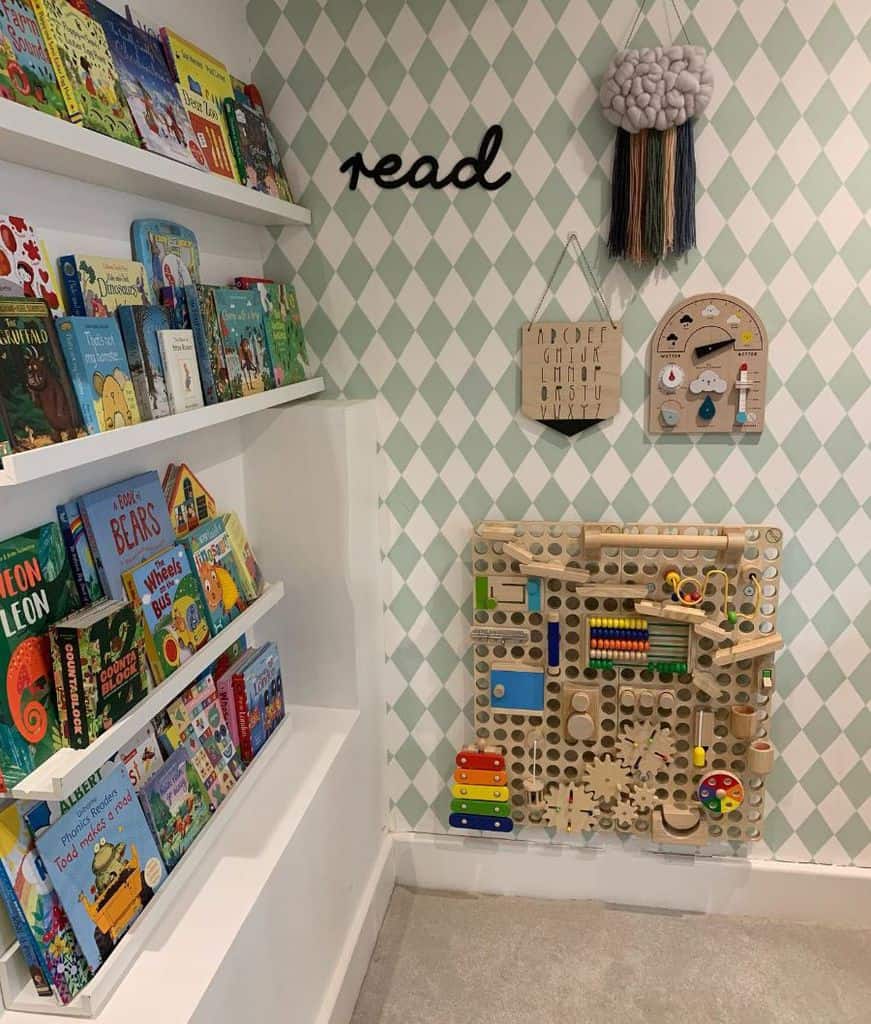
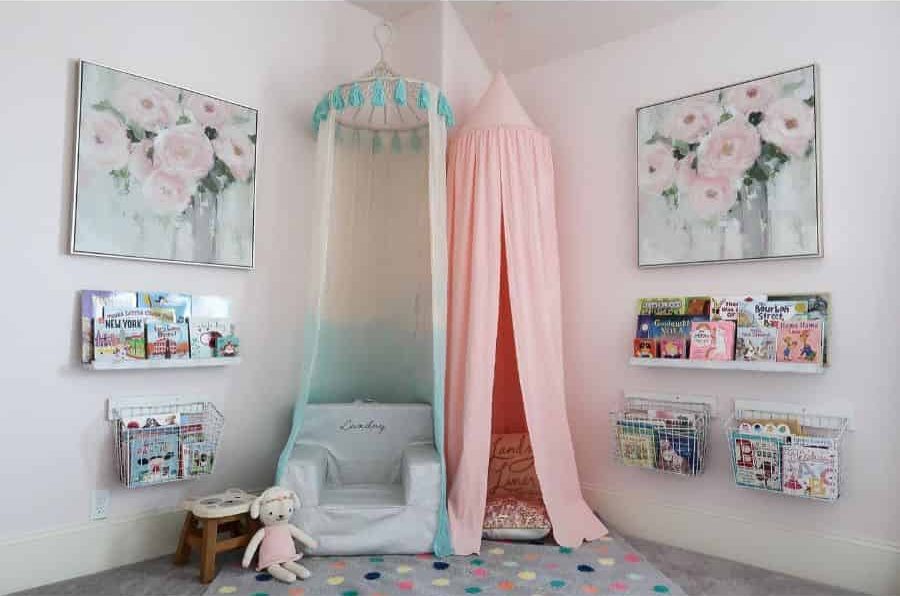
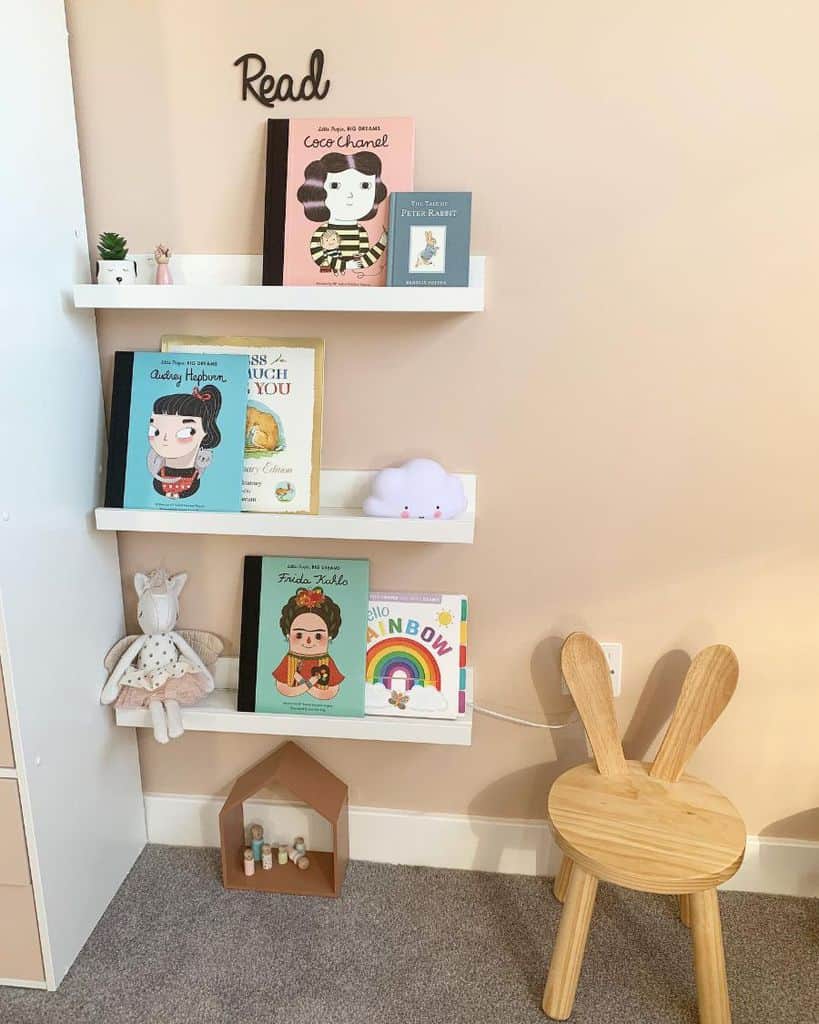
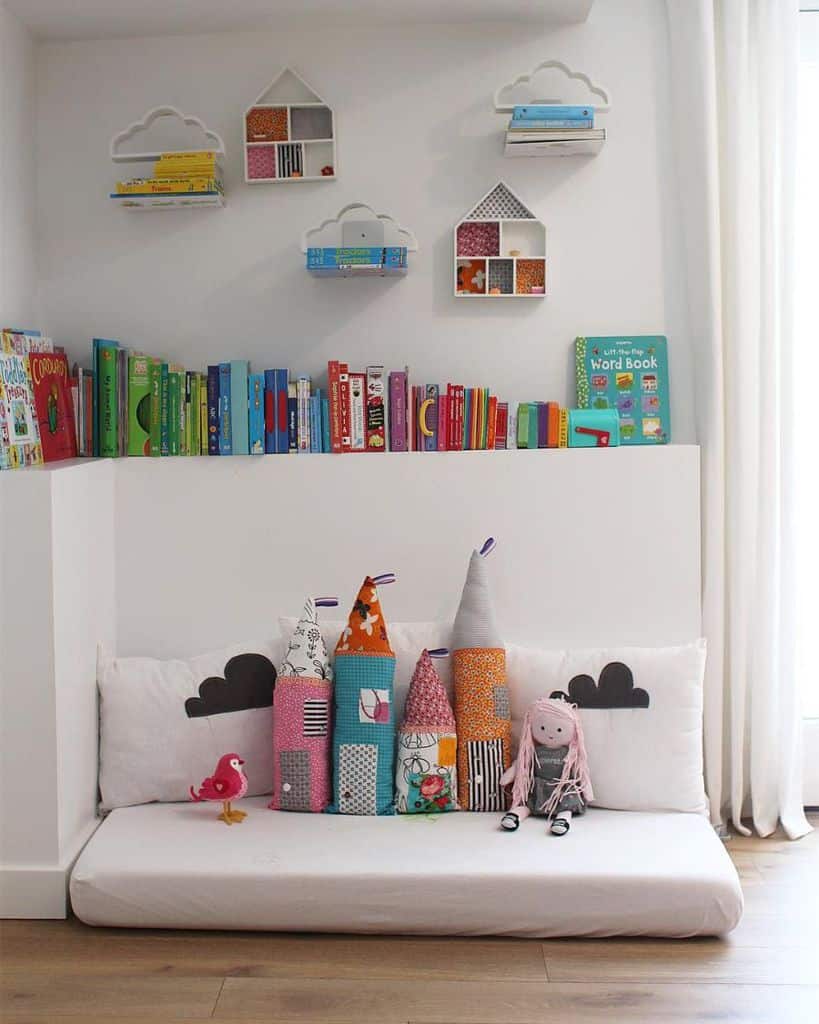

Low-hung floating shelves may be enough for a toddler’s library, but you will probably need a real bookcase as your child grows. Be sure to secure the bookshelves to the wall to avoid a tipping hazard. You can also store books in baskets or bins for easy cleanup. As with their toys, rotate your child’s books regularly to maintain interest in reading.
For more bookshelf ideas, click here.
8. Storage Playroom Ideas
Storage is one of the biggest issues to consider when planning a playroom makeover. Containing toy clutter is important for creating a welcoming, uncluttered space. A child’s playroom is the perfect place to try out fun, colorful storage ideas that might not work in a more formal room.
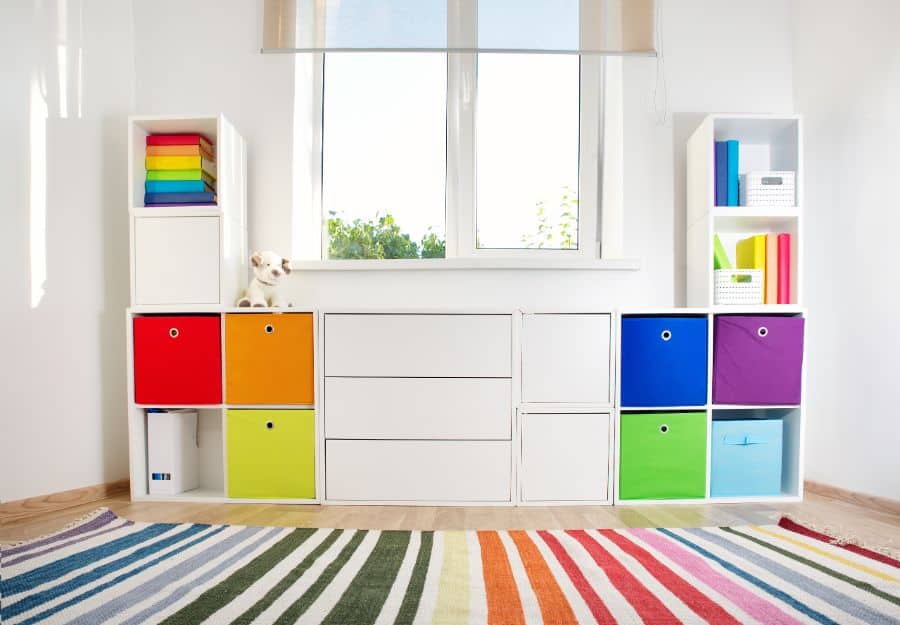
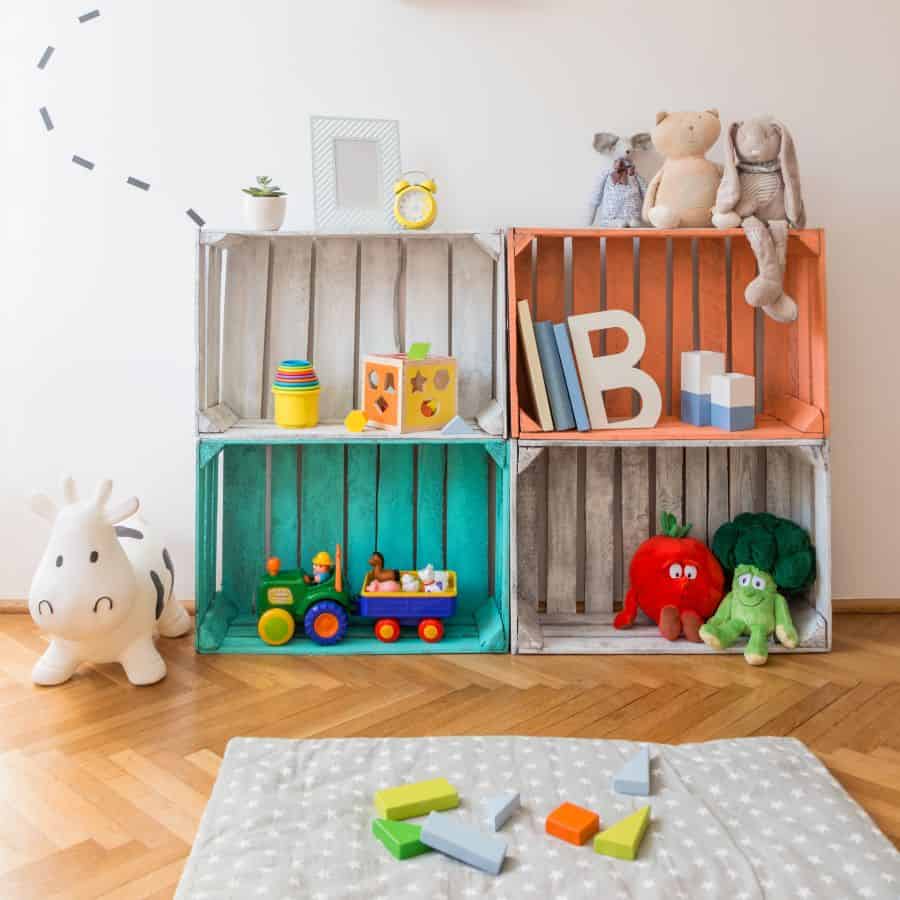
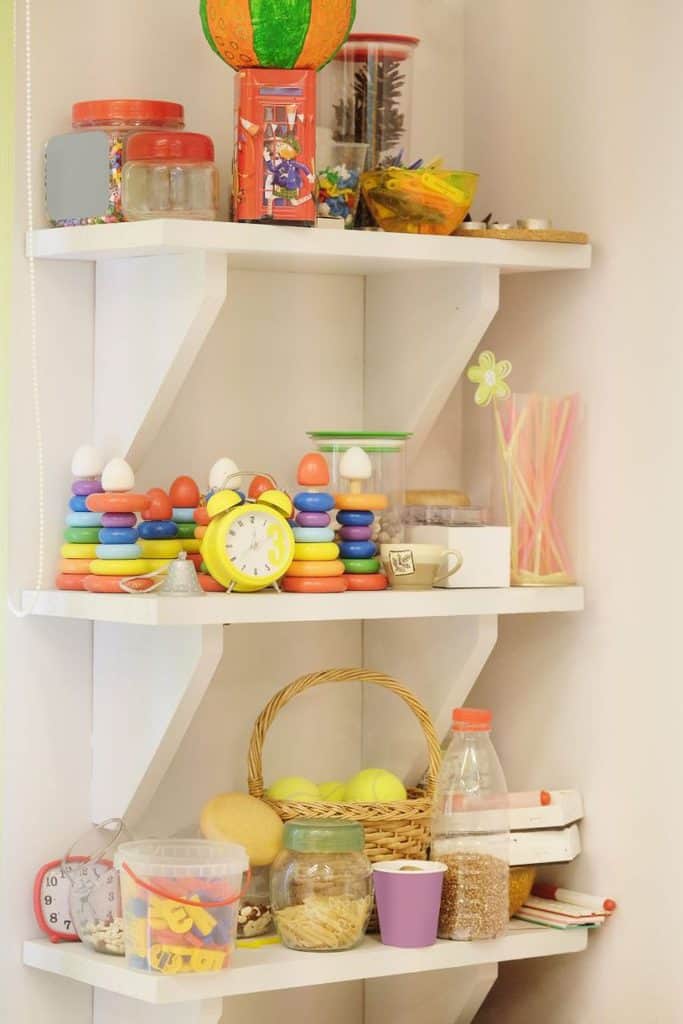

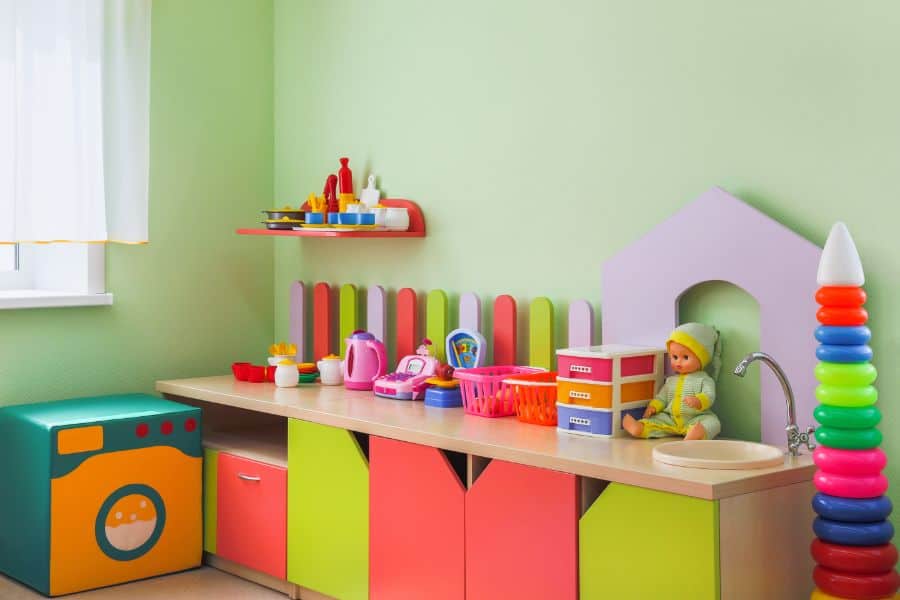
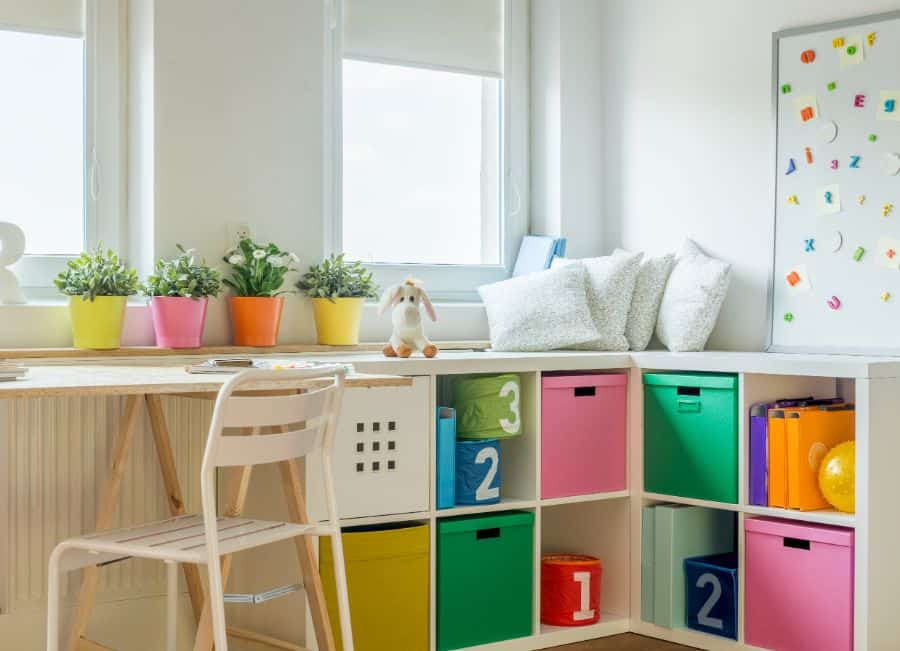
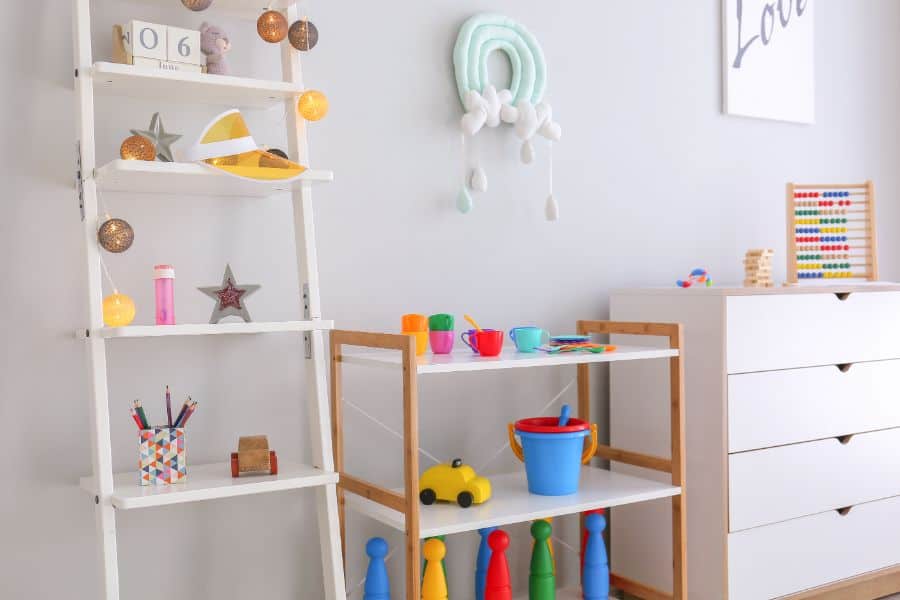
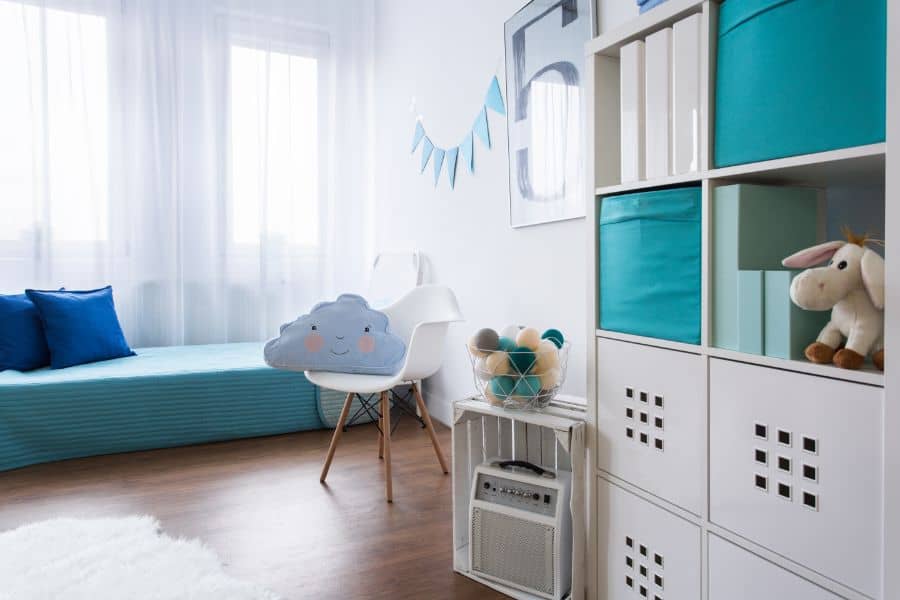
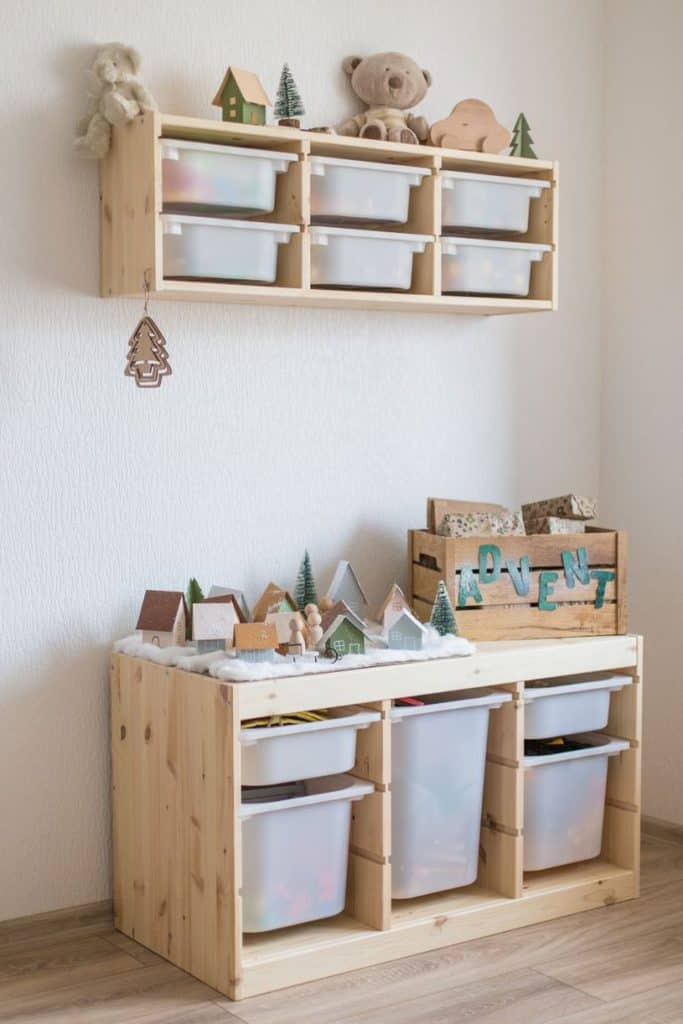
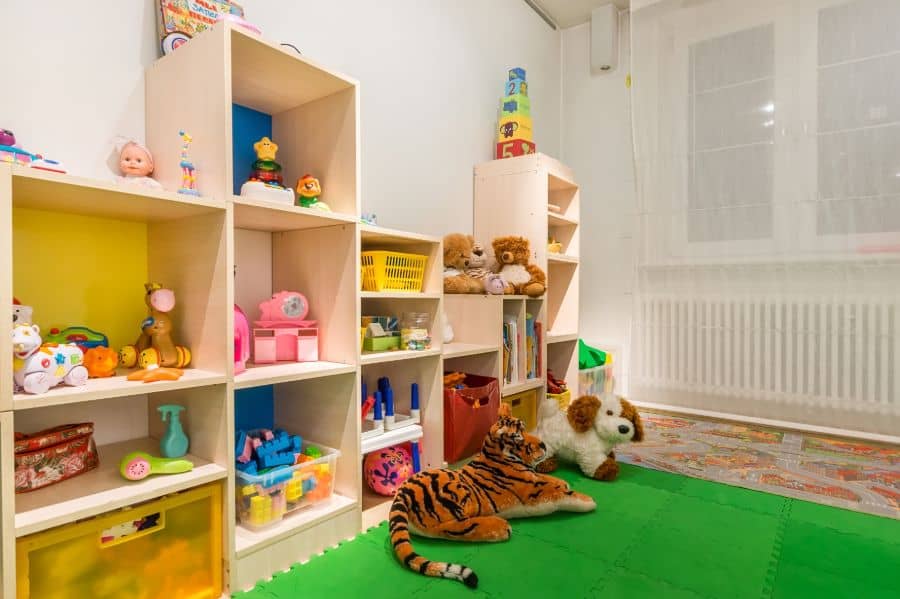
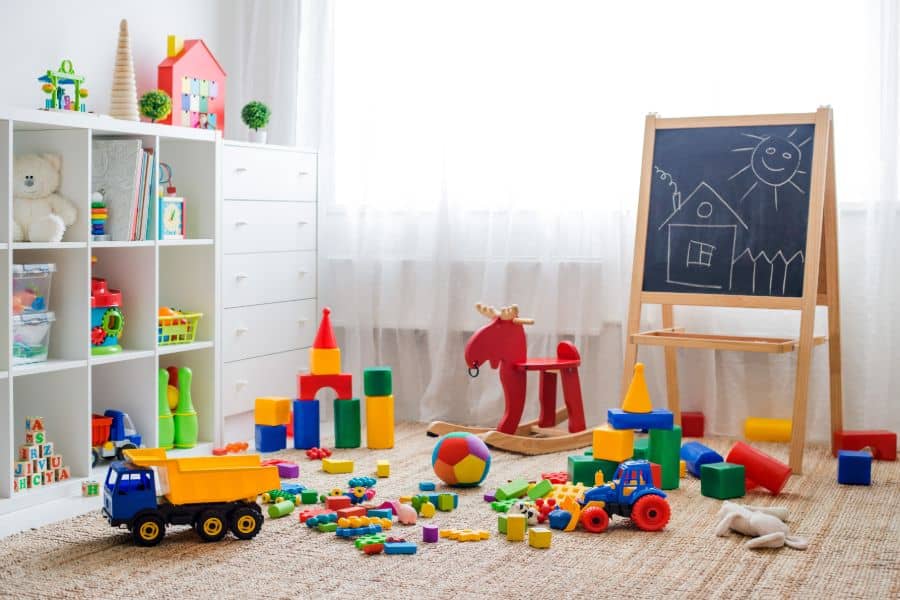
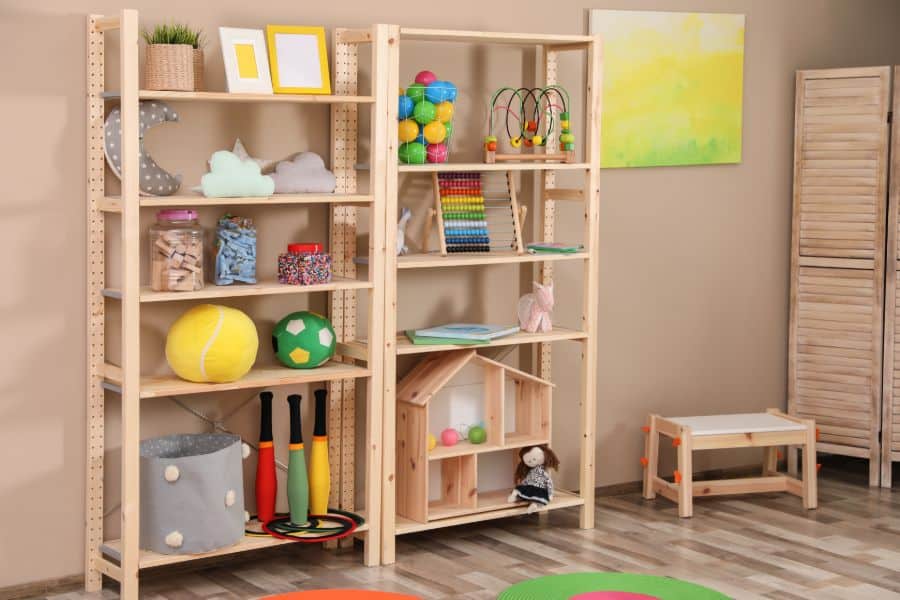
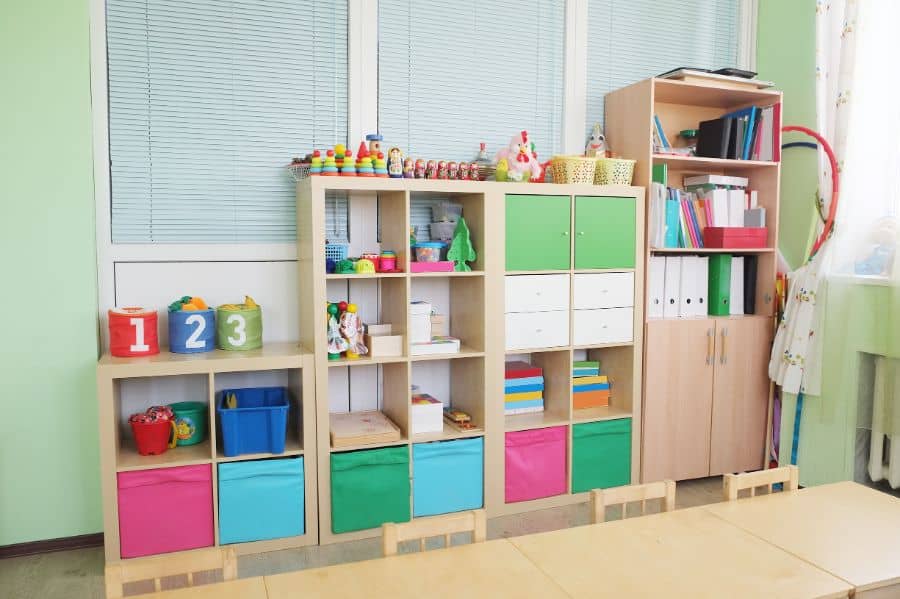
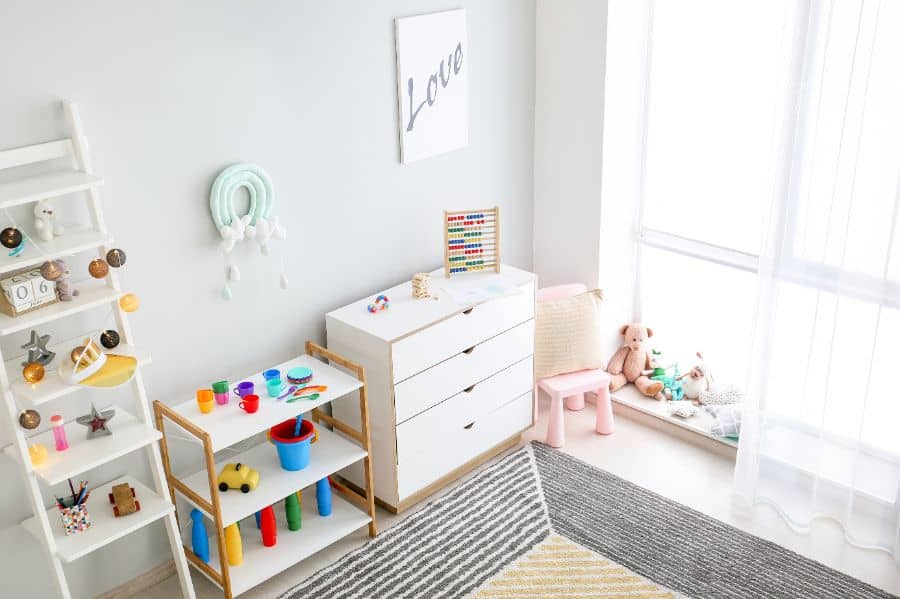
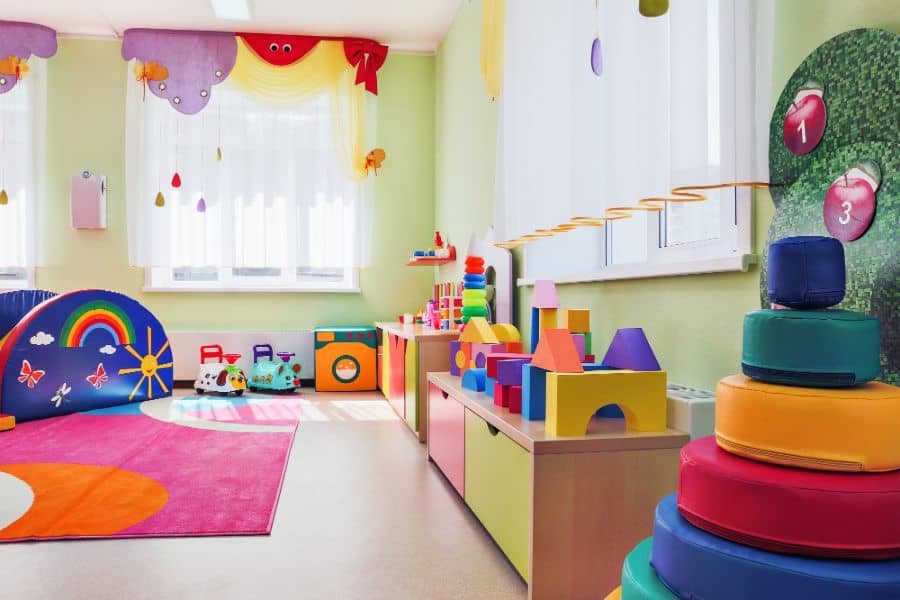
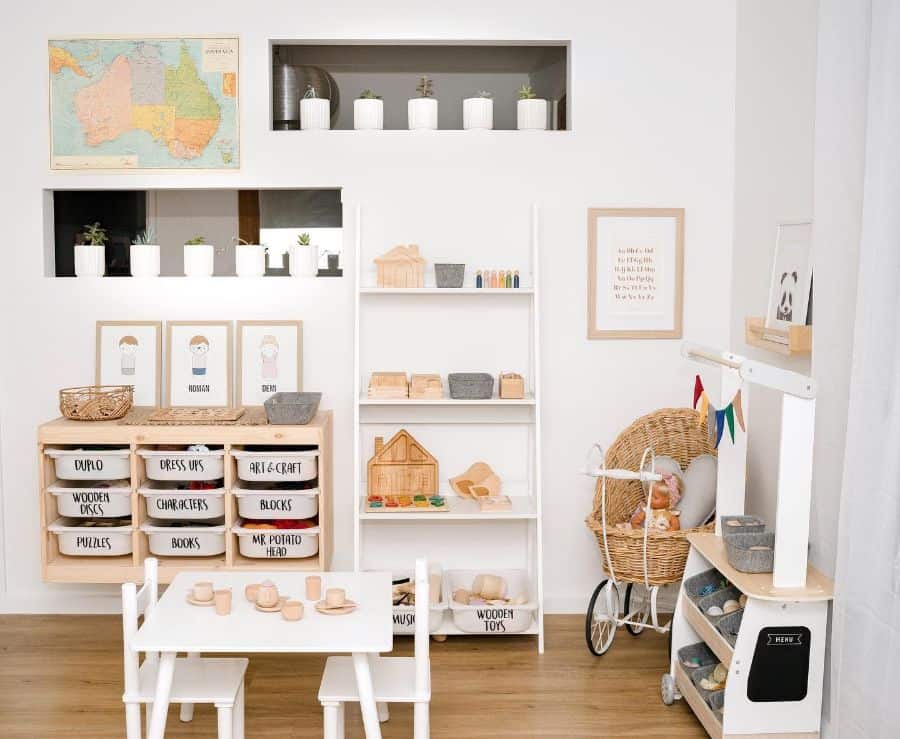
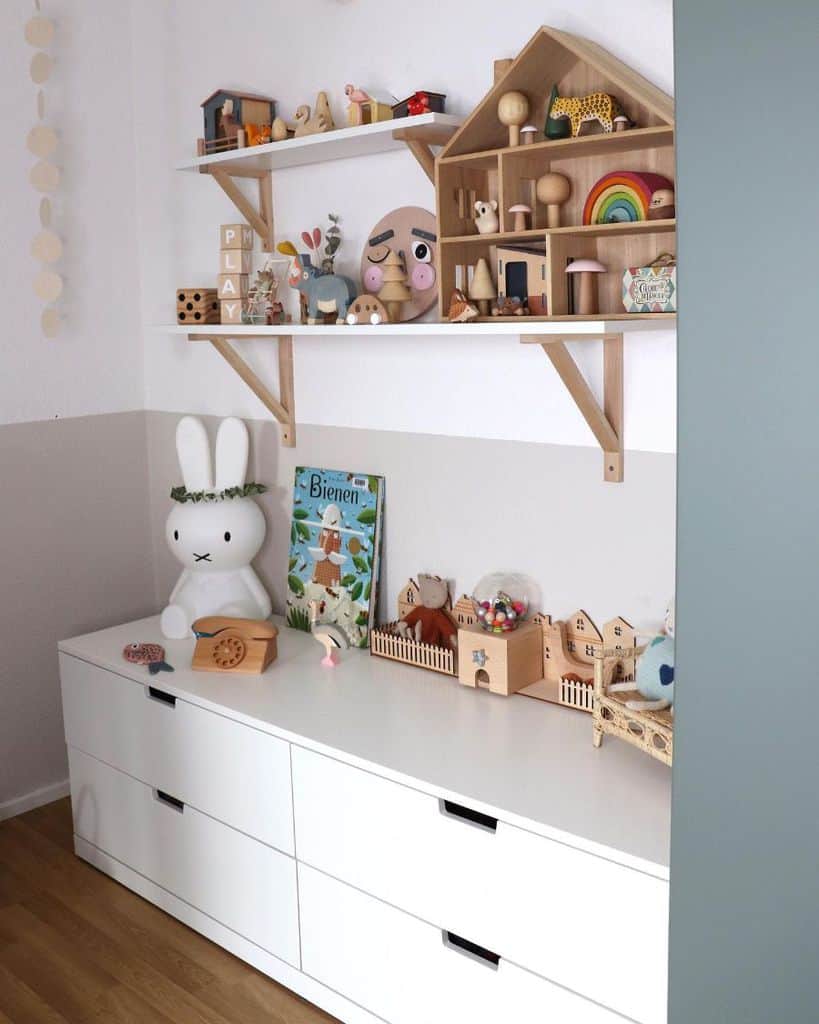
Place colorful baskets or fabric bins on low wooden shelves or inside cube-shaped storage units. Basic cube organizers are easy to DIY as long as you have basic construction skills. Watch this video to learn how to make your own cube storage organizer this weekend.
Repurpose wooden crates by painting them bright pastel colors and stacking them together as storage bins. Be sure to anchor them tightly to each other and the wall. Benches make good playroom furniture because they serve a dual purpose. Tuck baskets beneath the bench for storage and use the top for seating.
Hang simple wooden shelves up high and use them to keep art supplies, marbles, and other potential choking hazards out of reach. Clear plastic or acrylic jars and bins make lovely containers for your supplies, especially when they’re brightly colored. Small galvanized buckets also make excellent storage for small toys and are safe for little hands to handle.
9. Table And Chairs Playroom Ideas
At least one table and chair are necessary for kids’ rooms devoted to creative play. A toddler playroom needs a work surface for playdough and coloring. A playroom design for older kids needs a table and chairs for crafting, playing board games, and building Lego sets. Safety, durability, and ease of use are the main things to look for when choosing playroom furniture.

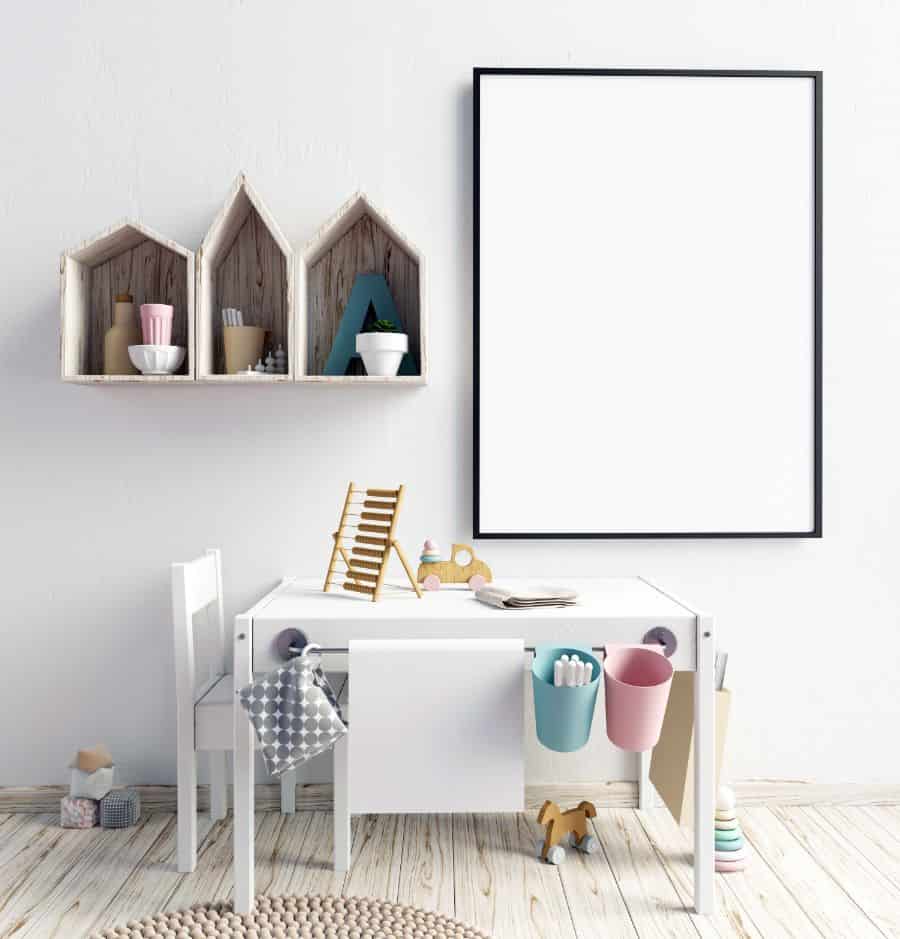
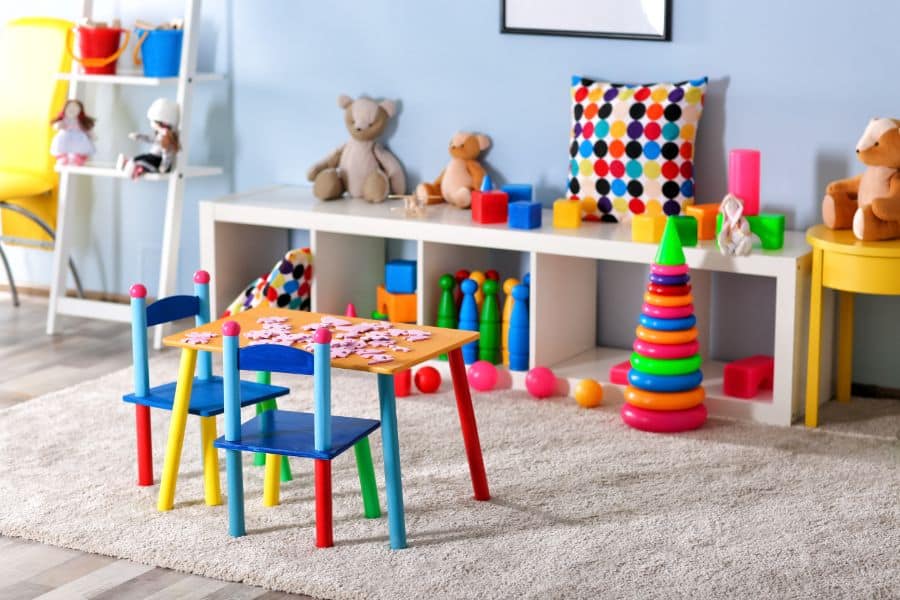

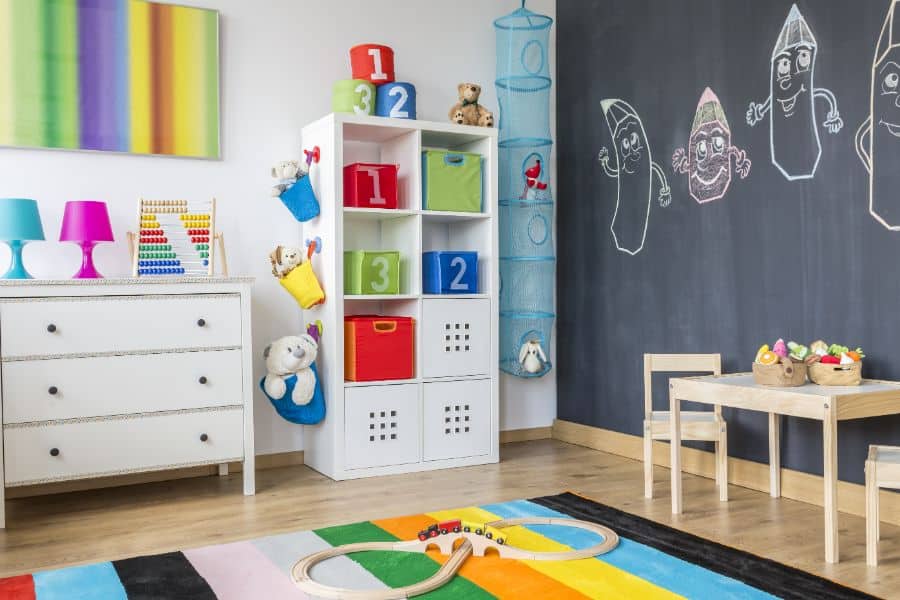
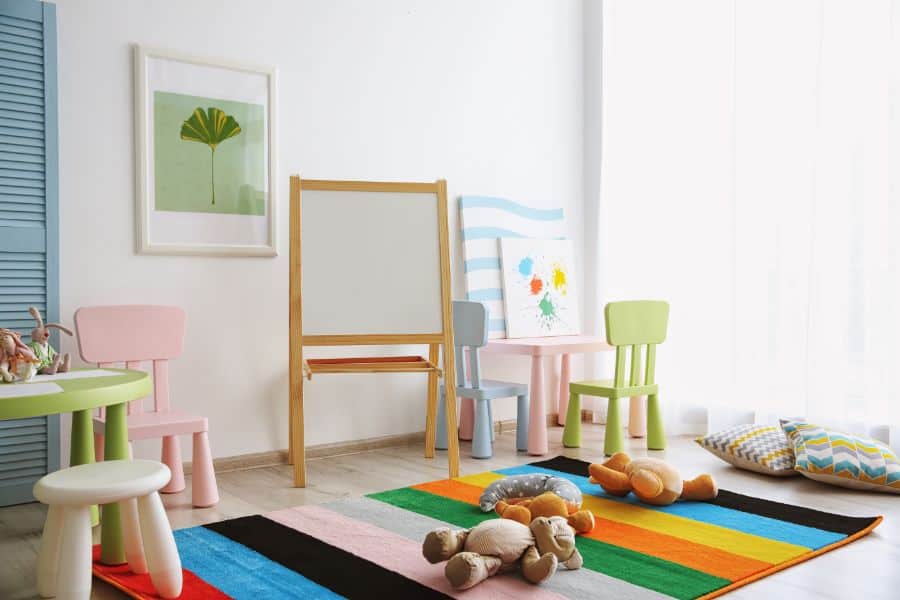
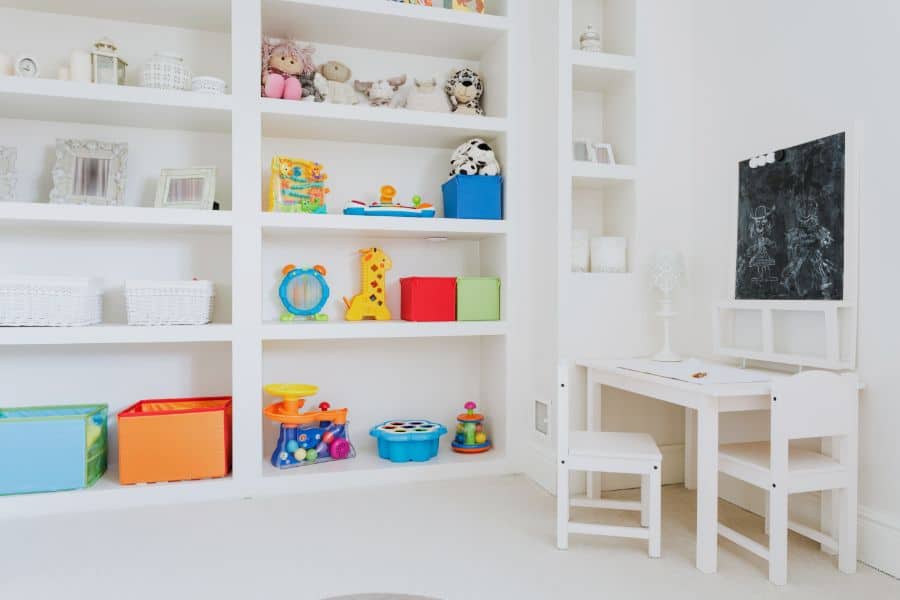
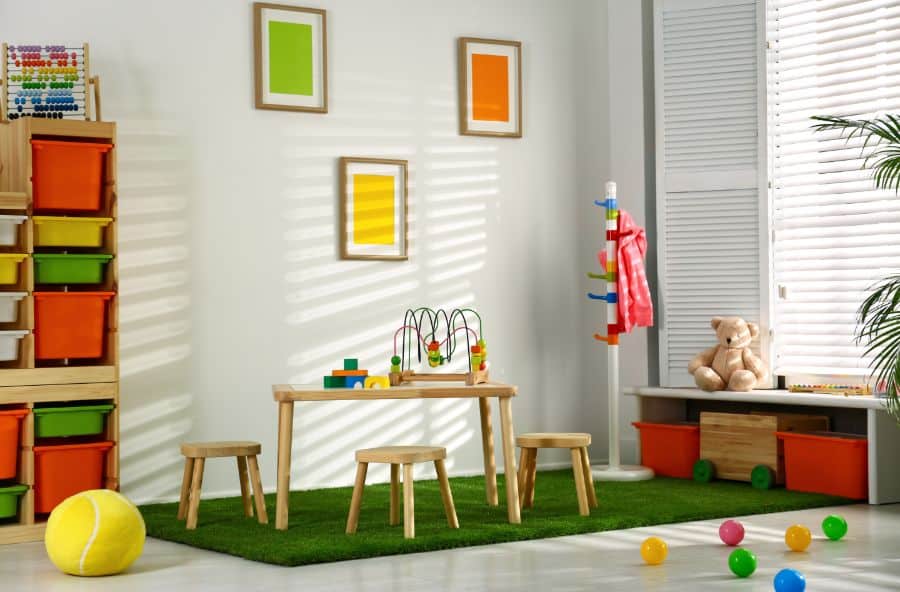


It’s also important to make sure to scale your playroom furniture to fit your child’s size. A large adult table may be fine for a big kid but hazardous for a young child. Small-scale chairs are welcoming to little ones because they’re easy to climb in and out of. A low bench with footstools is an excellent table/chair alternative in a toddler playroom.
Look for tables with durable, washable surfaces, such as plastic and wood. Plain white or wood tones are nice if your playroom decor is somewhat neutral. However, a kid’s room is also a place where it’s fun to add a punch of color. Consider painting each table and chair leg a different primary color, and paint the tabletop a fifth rainbow hue.
10. Wall Decal Wall Art Playroom Ideas
Wall decals are one of the easiest forms of DIY playroom décor. Ready-made and easy to apply, these colorful accents come in a huge variety of styles and patterns. Stars are a popular decal decorating idea for a child’s playroom. Hang colorful stars on the walls, or put glow-in-the-dark star decals on the ceiling for a fun effect at nighttime. Animals, cartoon characters, rainbows, and flowers are all fun décor options for a child’s playroom.
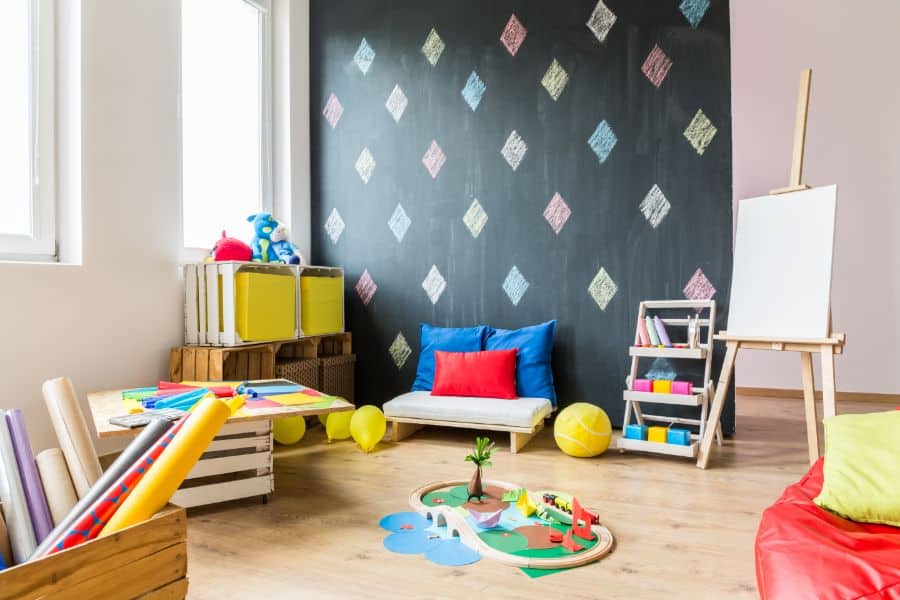


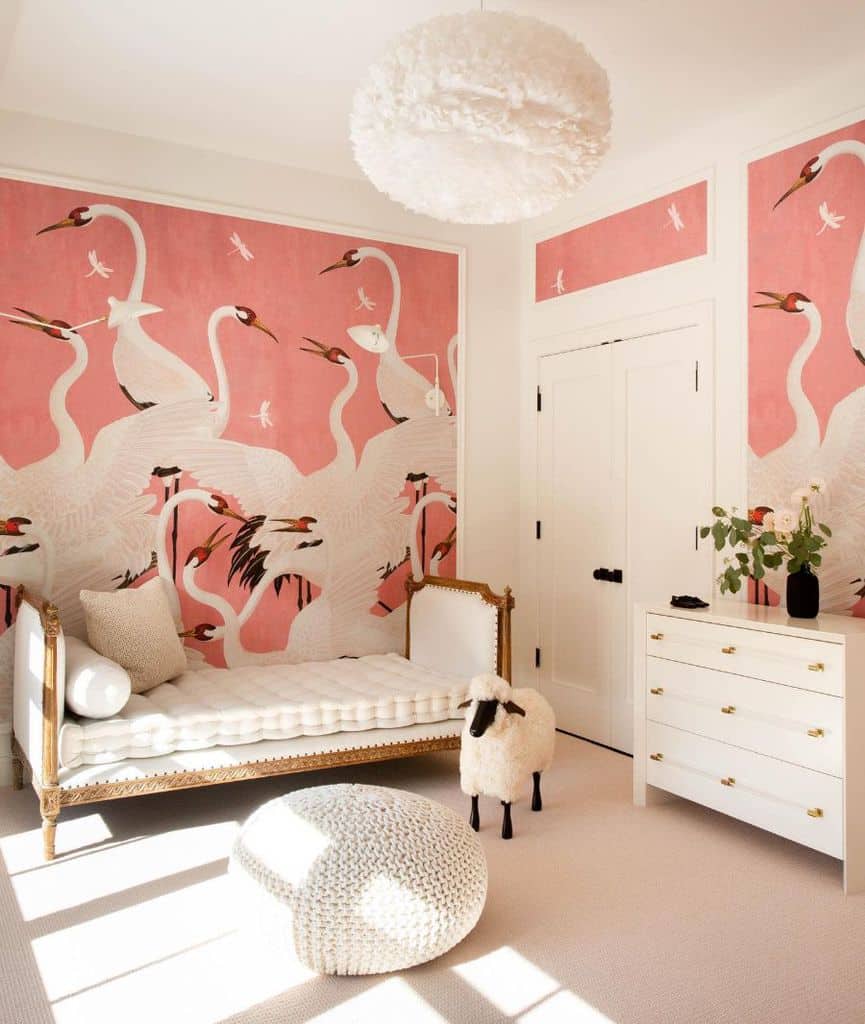
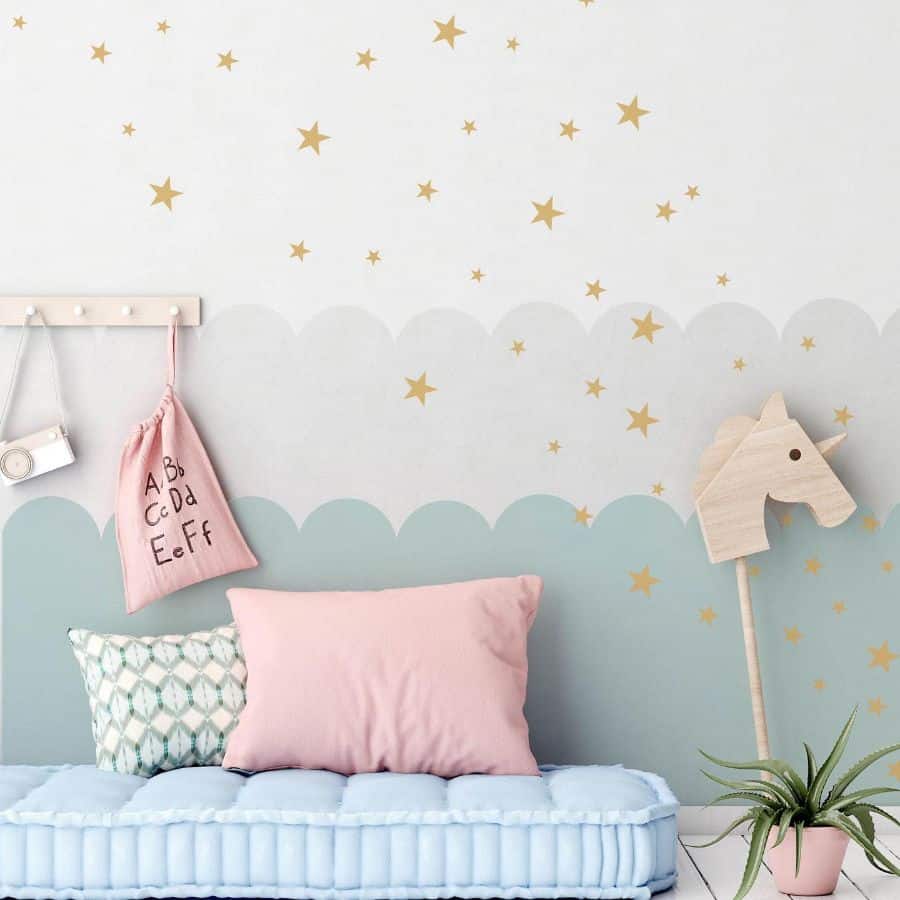
There are countless businesses online that offer personalized decals for your kids’ playroom. Order one with each of your kids’ names, or choose a monogram initial for each child. Encouraging words or phrases add an inspirational touch to an imaginative play area. Decals aren’t just for walls; consider using them as décor accents on your playroom furniture.
Although wall decals are fairly easy to DIY, it’s important to learn a few tips to apply them correctly. The right DIY technique is necessary to avoid misaligned images or bubbles beneath the vinyl. This is especially true with larger decals. This video explains the basics for applying wall decal decor yourself:
Playroom Idea FAQs
How can I keep my kid’s playroom from being overtaken by toys?
A playroom is just that: A play room. So it’s the natural place for toy storage. However, it can be easy for toy clutter to take over the room, especially when space is in short supply. In addition to following the toy storage suggestions above, consider rotating your child’s toys.
Cull your child’s toys regularly, and box up unused toys. Place this box in the attic or garage. After a month or so, bring this toy box out of storage and refill it with toys your child has recently lost interest in. By engaging in a regular toy swap, you prevent clutter while allowing your kid to enjoy his or her favorite things.
How can I ensure a safe play space when creating our playroom design?
A perfect playroom is a safe playroom. Naturally, any kids’ room will include outlet covers, cordless window treatments, and child-safe furniture. But some playroom elements pose hidden risks that you might not have considered. Follow these suggestions to make your playroom safer for your little one:
- Secure bookshelves, dressers, and any heavy pieces of furniture to the wall.
- Keep your child’s stuffed animal collection and other soft toys out of playpens or napping zones.
- Keep toys with magnets away from children under age six.
- Foam play mats can pose a choking hazard for a teething baby or toddler, and inexpensive foam products may contain formaldehyde or other toxins.
- Although kids’ art supplies are usually non-toxic, they can still pose a choking hazard or cause digestive problems if eaten. Keep all crayons, glue, play dough, and other arts and craft supplies out of reach when not in use.
The post The Top 71 Playroom Ideas – Interior Home and Design appeared first on Next Luxury.
